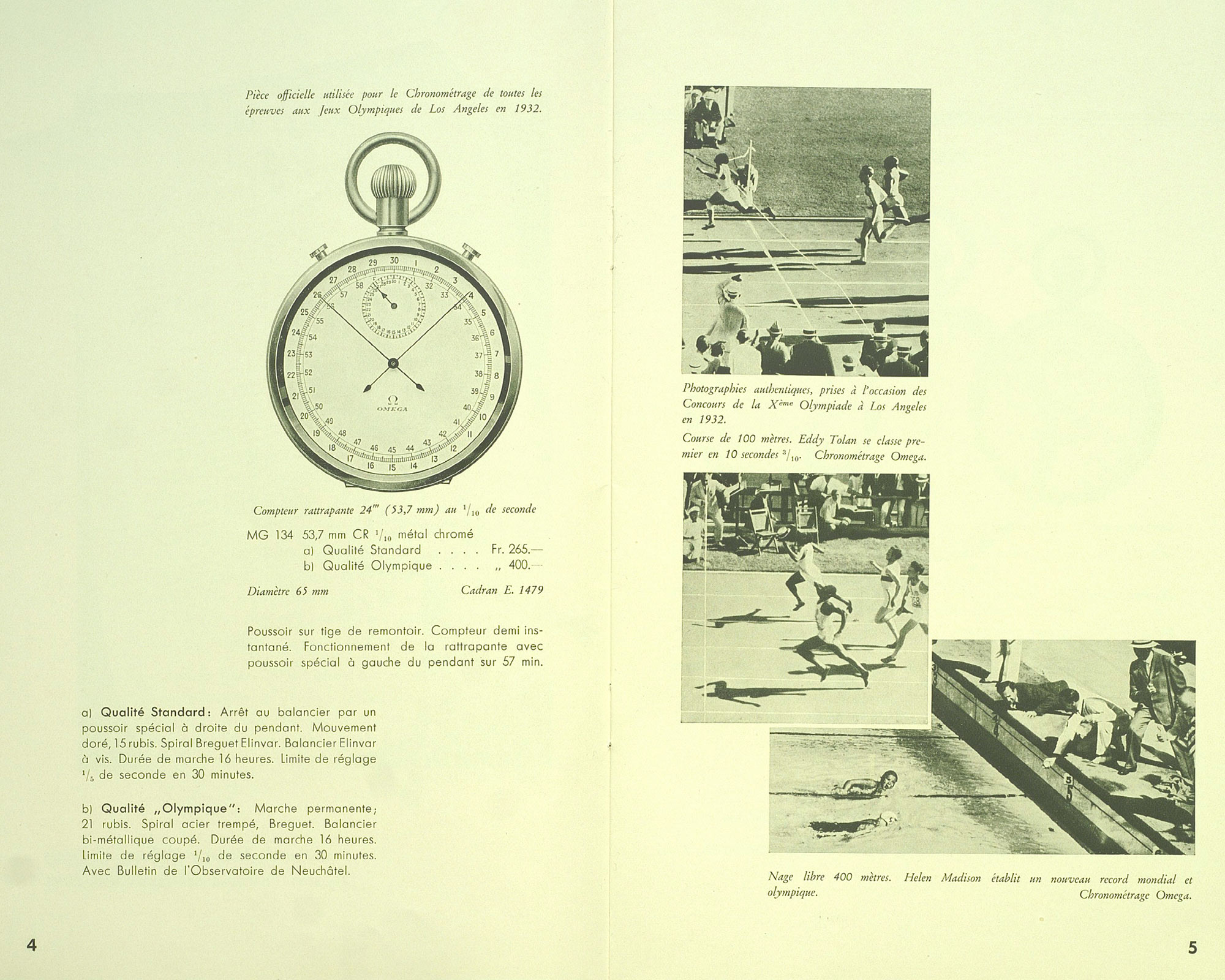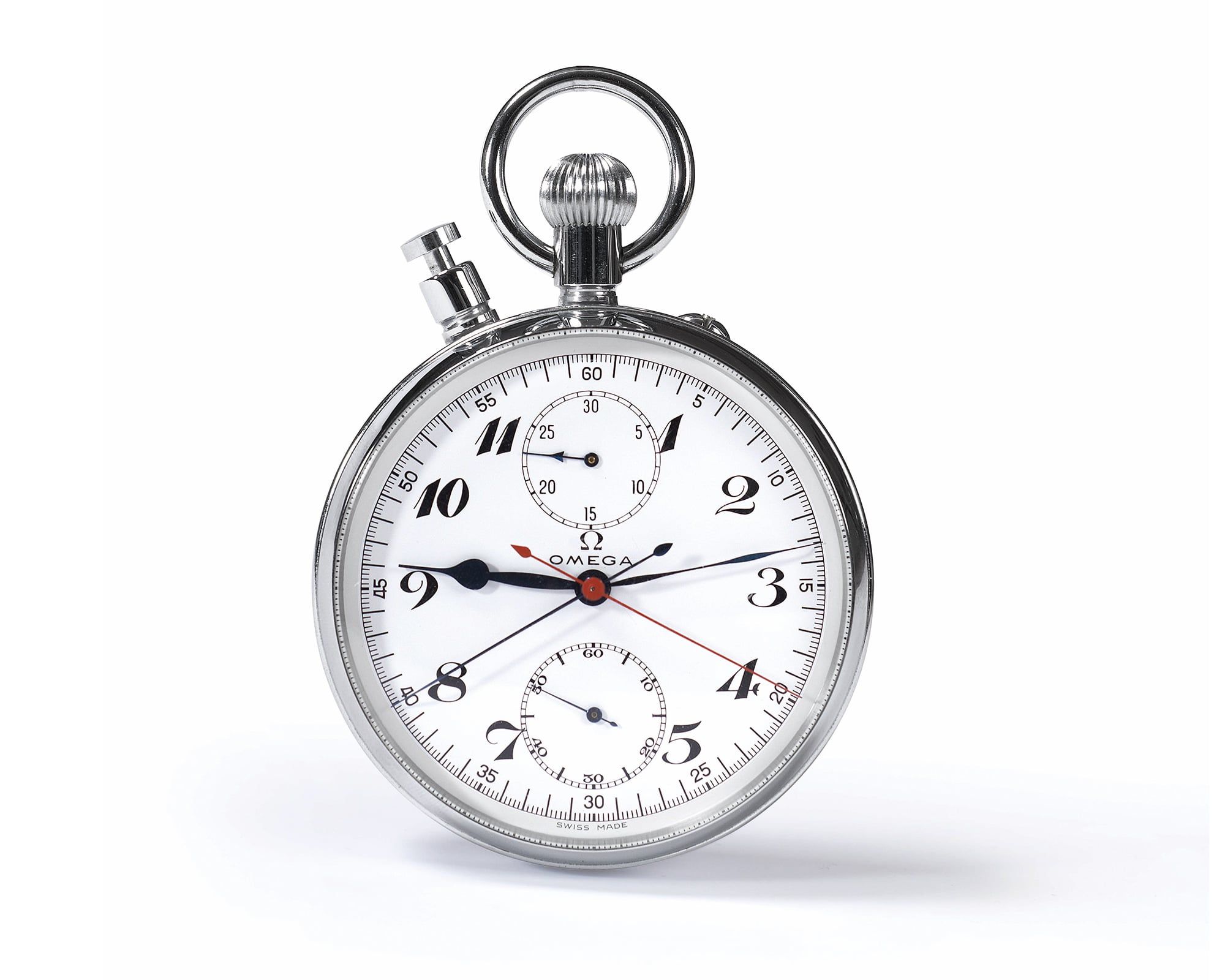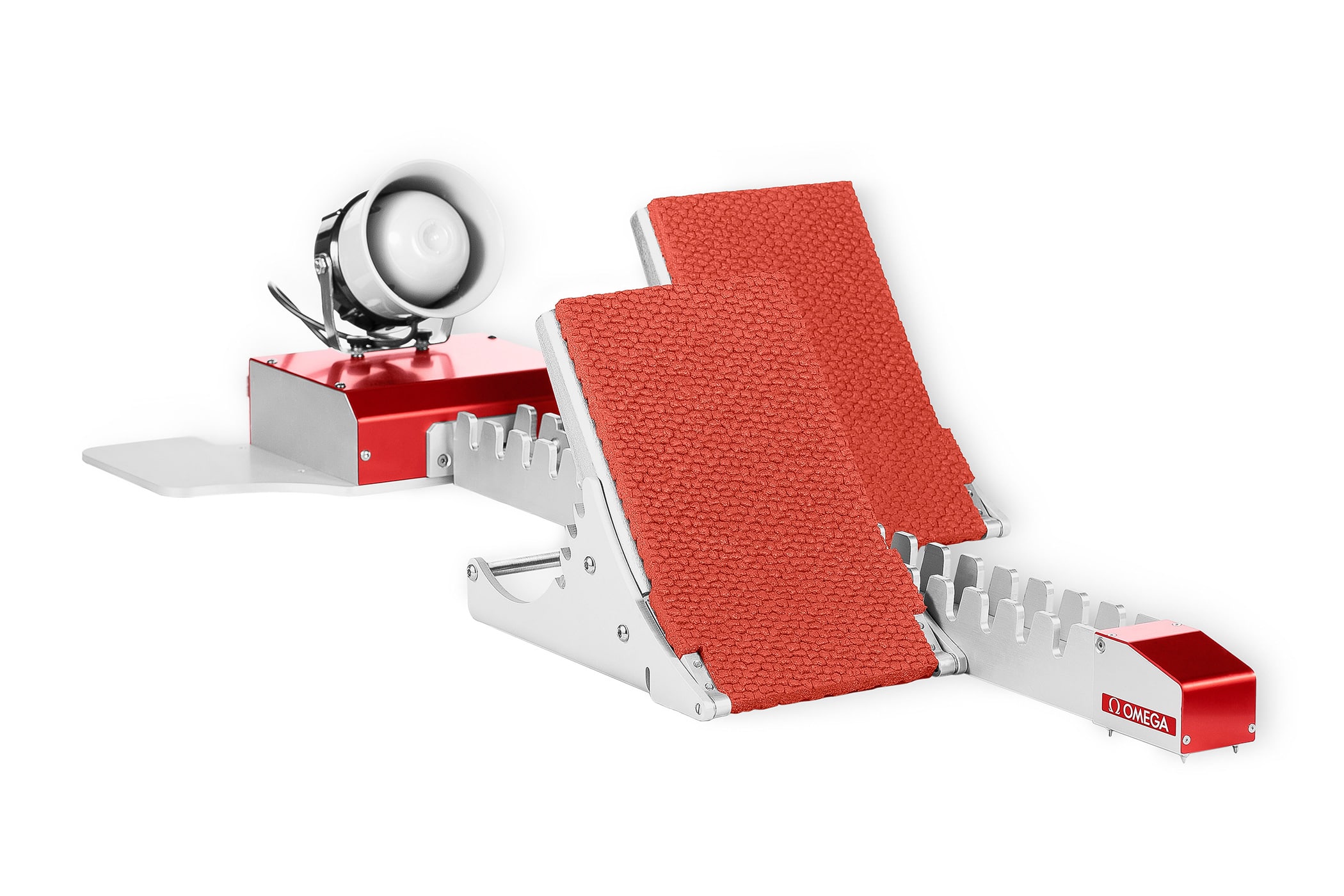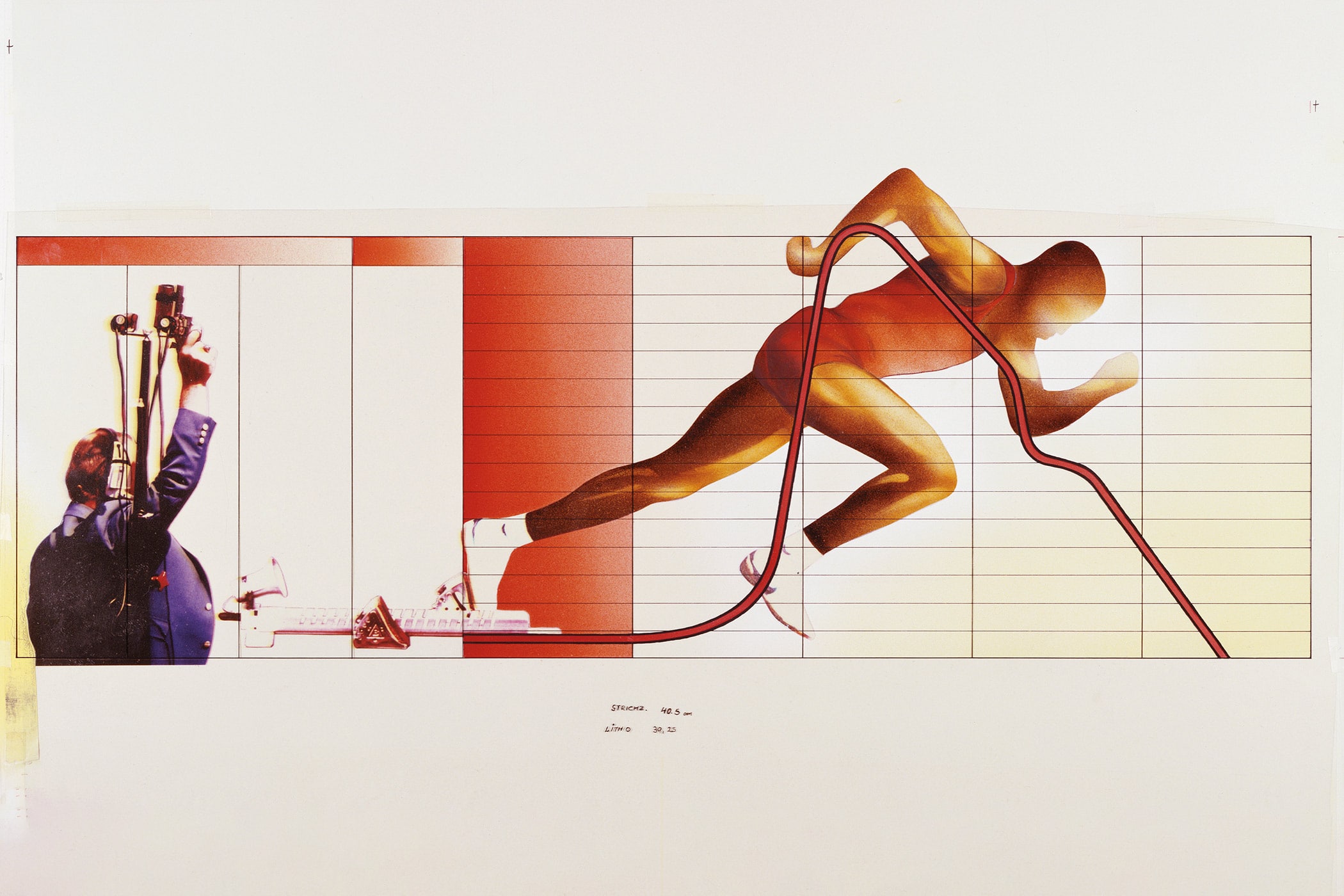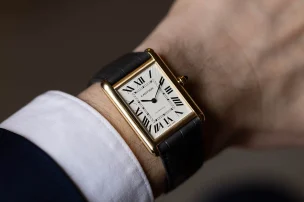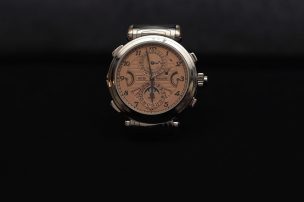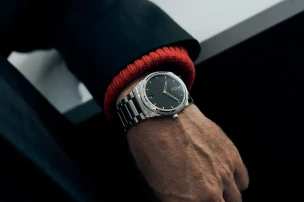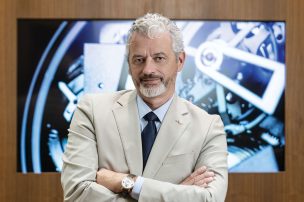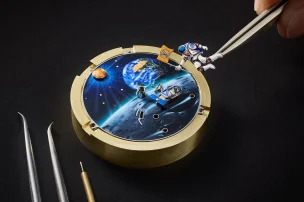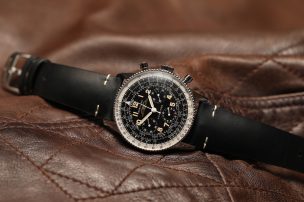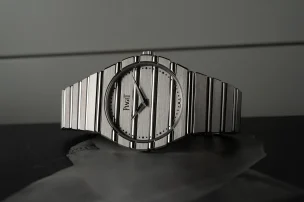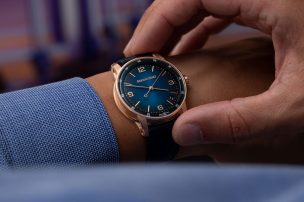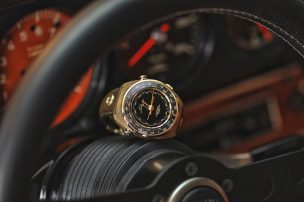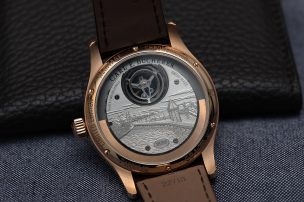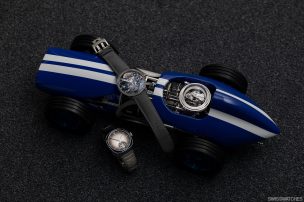
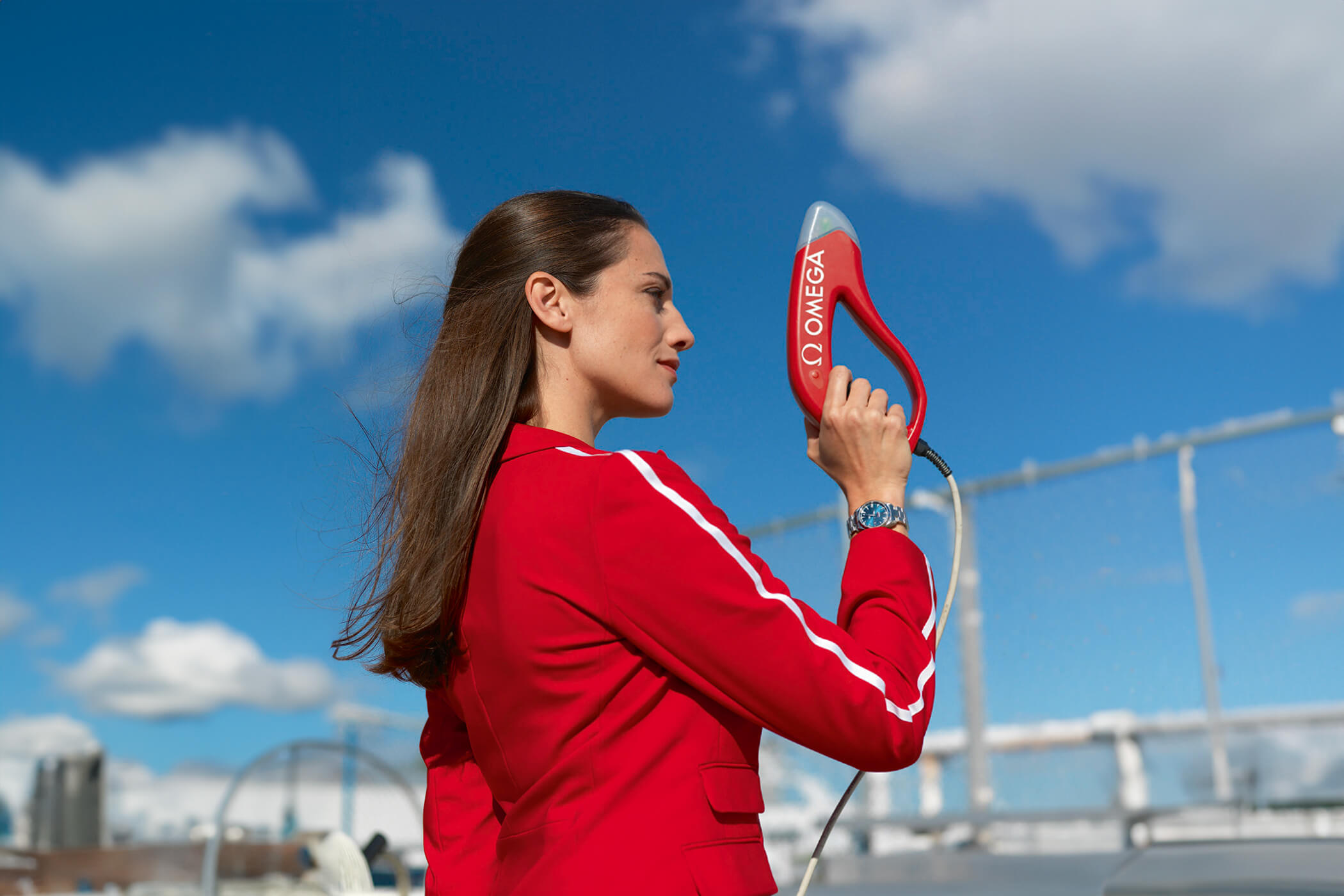
To a Millionth of a Second: How Omega’s Timekeeping Lab Revolutionised Olympic Timing
When Omega was first appointed as the official timekeeper of the Olympic Games by the International Olympic Committee in 1932, a lone watchmaker travelled from Biel to Los Angeles with 30 split-second chronographs to measure the times of the 1,334 participating athletes. Over 90 years and 30 Olympic Games later, Omega is heading to Paris with an entourage of 550 people and 350 tons of equipment for this summer’s Olympics, marking the 31st time Omega has taken on the role. For three weeks, both people and machines will be pushed to their limits. Yet, even just weeks before the event, Alain Zobrist, CEO of Omega’s Swiss Timing subsidiary, appears remarkably calm. We visited Omega’s Timekeeping Lab in Corgémont to speak with Zobrist about the latest technological advancements and why Omega’s responsibilities now extend far beyond traditional timekeeping.
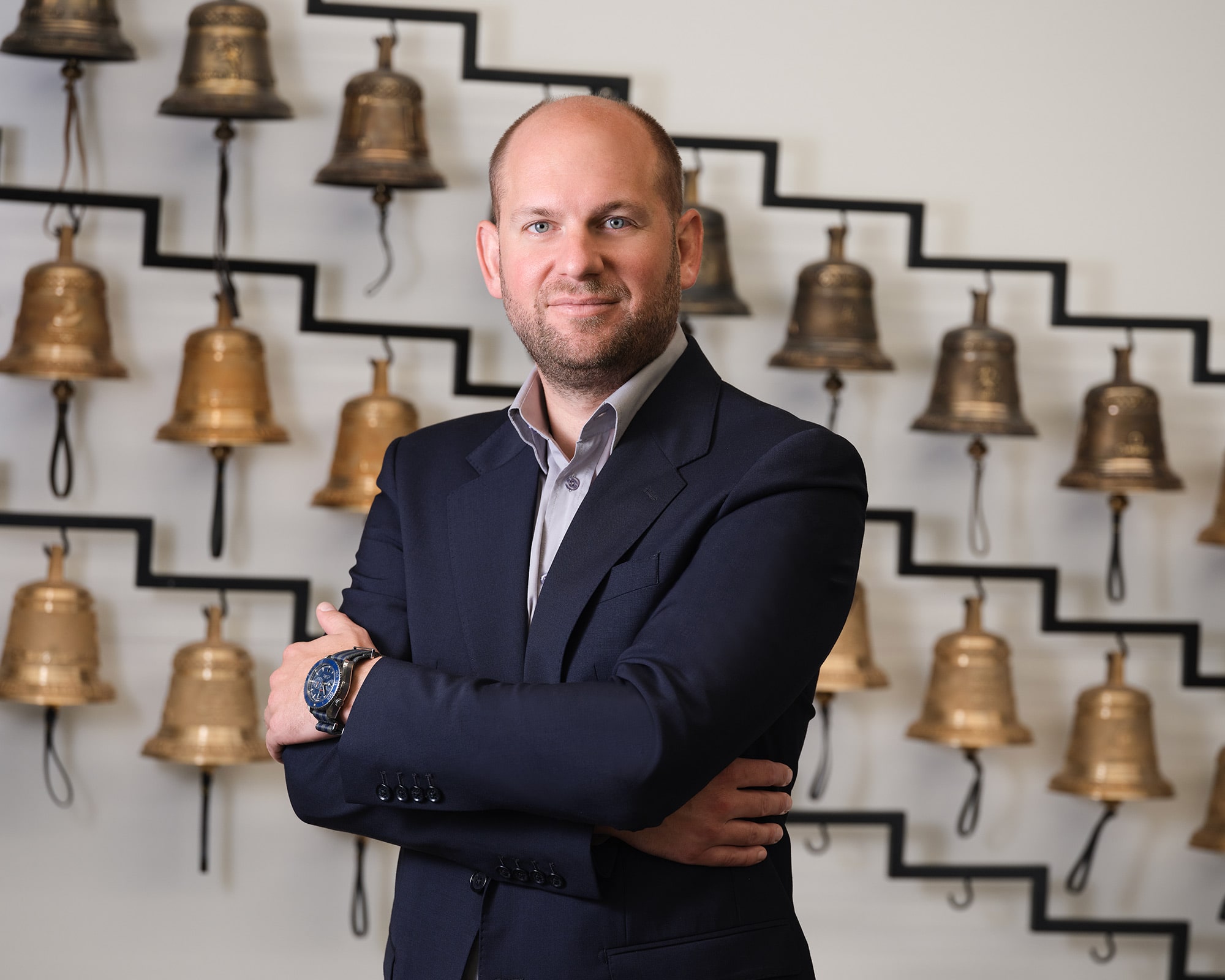
Alain Zobrist, CEO of Omega’s Swiss Timing Ltd.
The beginnings: A pistol in tow
I daresay that anyone with an interest in sports has at some point seen Omega’s association with the Olympic Games. But how was timekeeping managed before Omega took over? In the early days, each timekeeper used their own stopwatches from various manufacturers, capable of measuring to 1/5th of a second, but neither certified for accuracy nor standardised. Recognising the need for improvement, the IOC ultimately chose Omega, which was the only company able to provide 30 independently tested and certified chronographs capable of measuring to 1/10th of a second and recording intermediate times. These timepieces were certified by the Astronomical Observatory in Neuchâtel.
During the first Olympic Games in 1932, and also at the Winter and Summer Games in 1936, a single Omega watchmaker was responsible for the entire timekeeping. While only 30 stopwatches were used in 1932, by 1936, a watchmaker named Paul-Louis Guignard arrived at the Berlin Summer Games with 185 stopwatches, though he was assisted by a small team for maintenance. Always in tow: a revolver. Not for protecting the stopwatches from thieves, but to signal the start of a competition – using blank cartridges, of course.
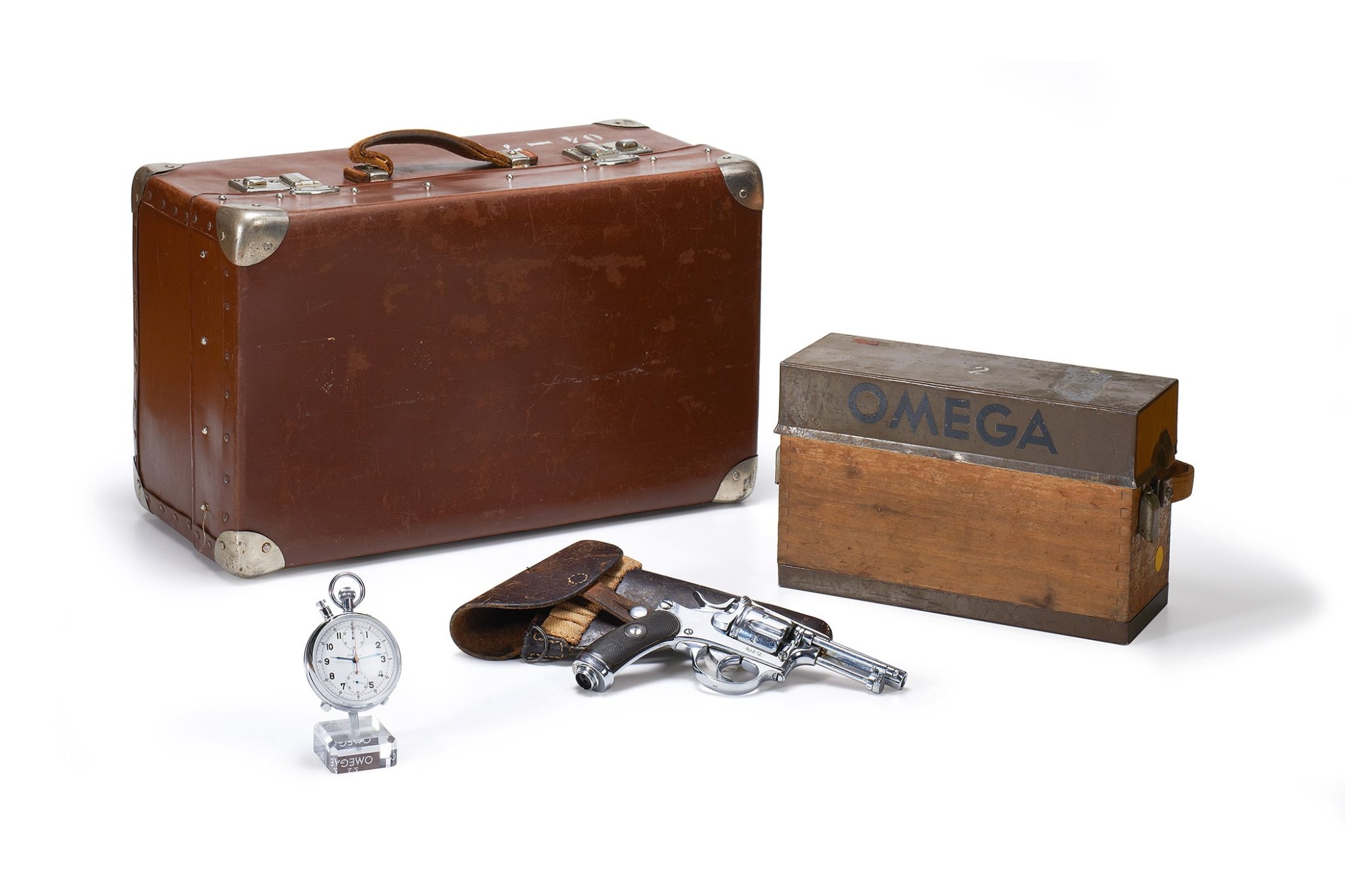
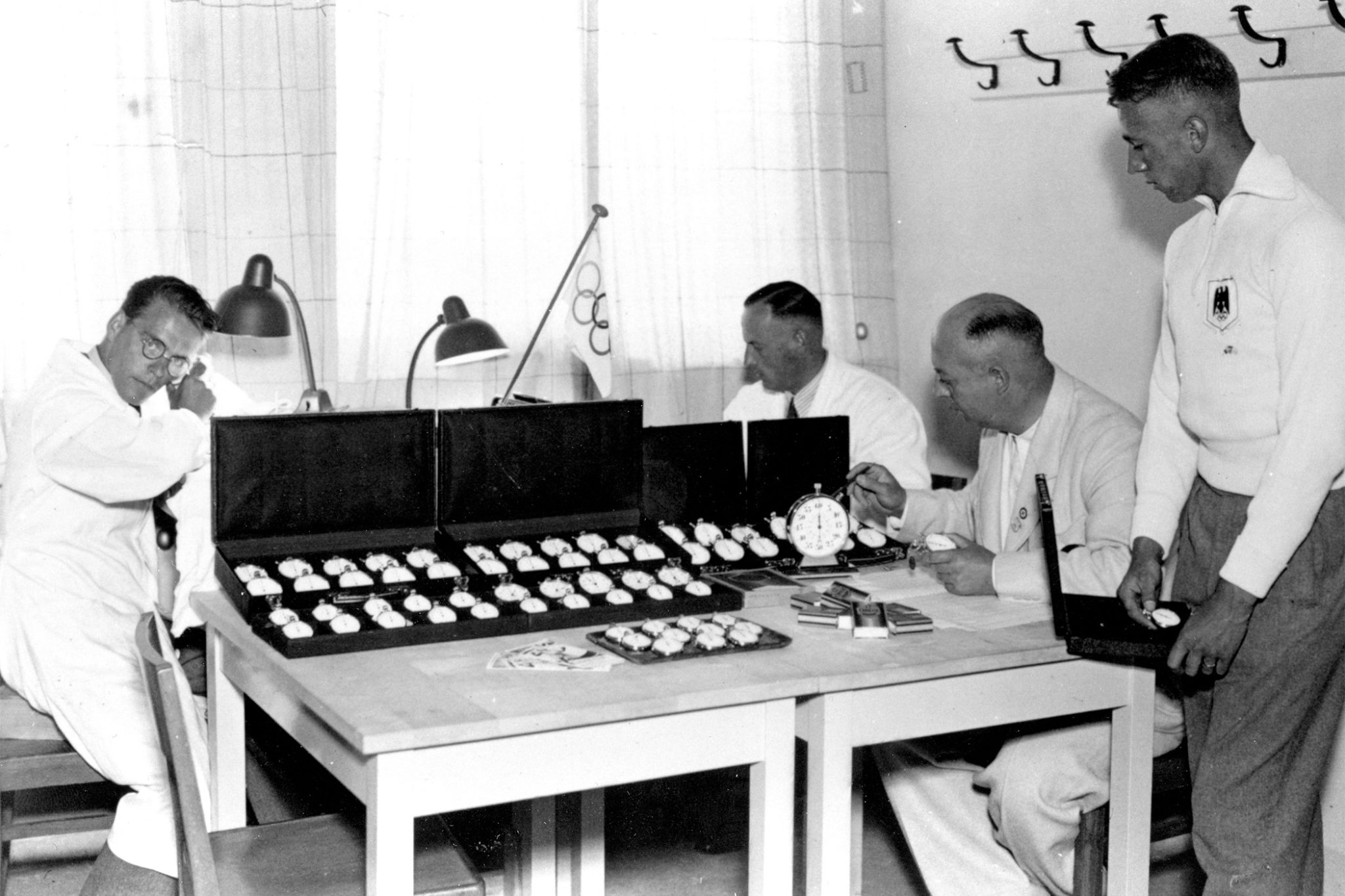
The rudimentary nature of timekeeping in those years is illustrated by an example from the 1936 Winter Olympics in Garmisch-Partenkirchen, Germany. To measure ski race times, a timekeeper at the starting hut noted the athlete’s start time on a piece of paper, while another timekeeper at the finish recorded the arrival time. Since the finish line timekeeper did not know when the skier had started, the note with the start time was placed in the next competitor’s pocket and carried down, so the finish timekeeper could then calculate the race time. In other words, both athletes and spectators needed a bit of patience to find out who was leading.
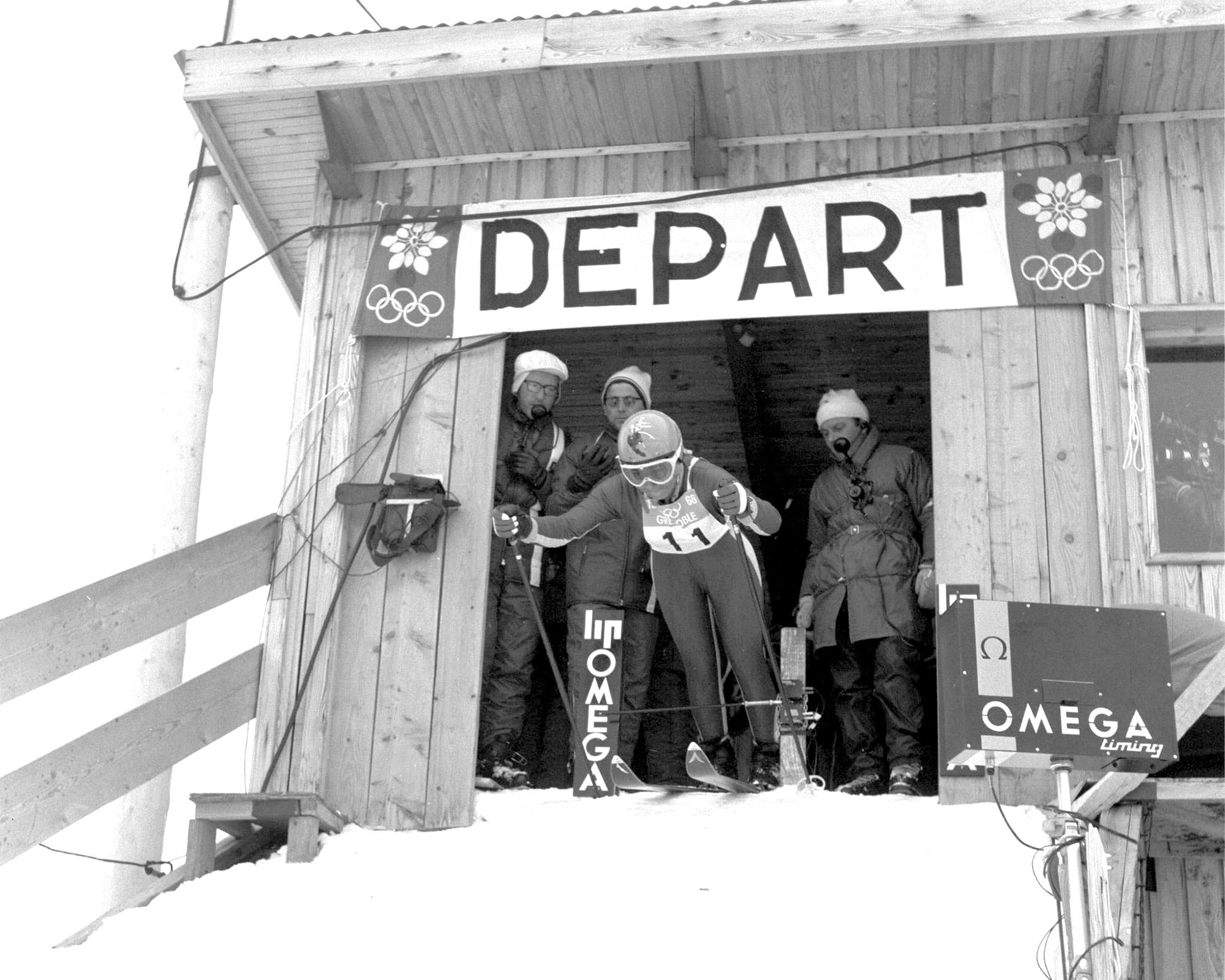
In 1936, at the Berlin Summer Olympics, the first so-called TV lounges were introduced, allowing audiences in Berlin, Leipzig, and Potsdam to watch the Games live on screen. This also provided Omega with the opportunity to showcase its timekeeping expertise to a wider audience.
Magic Eye: Rapid technological advances
The 1940s saw significant technological advancements. At the 1948 Winter Olympics in St. Moritz, Omega introduced photoelectric cells for the first time, replacing the traditional finishing tape. When the first athlete crossed the finish line, the time was stopped by a highly reactive beam of light, which could measure to the nearest thousandth of a second. Dubbed the ‘Magic Eye’, this technology significantly improved precision compared to human reaction times. In the same year, Omega also debuted the first photo finish camera, which, along with the photo cells, helped determine the order of finishers. However, patience was still required, as these early cameras used film that needed to be developed in a darkroom, meaning the official results were only available about two hours later. Today, Omega employs four photo cells at the finish line, integrated into a single system that transmits data within milliseconds.
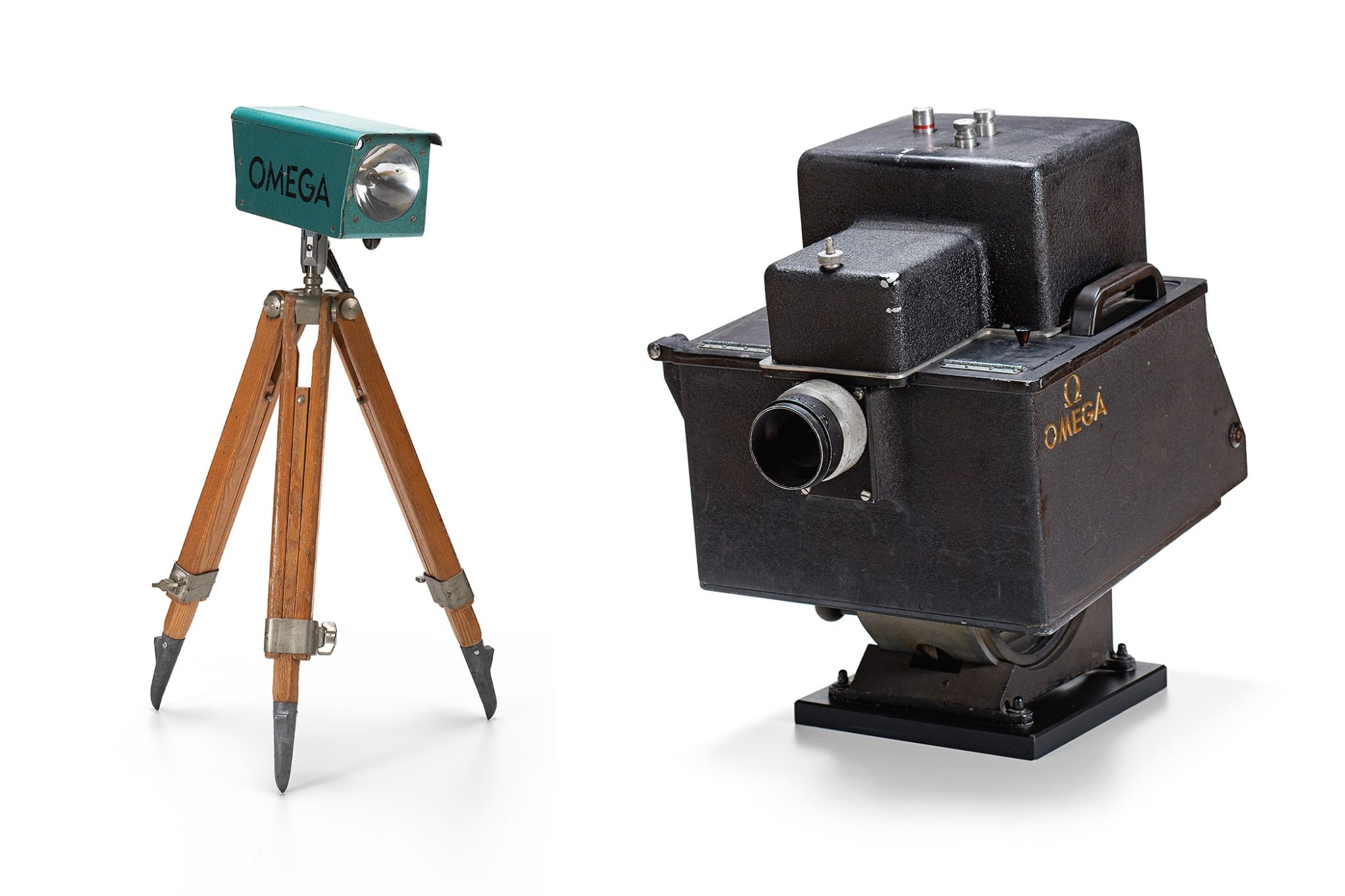
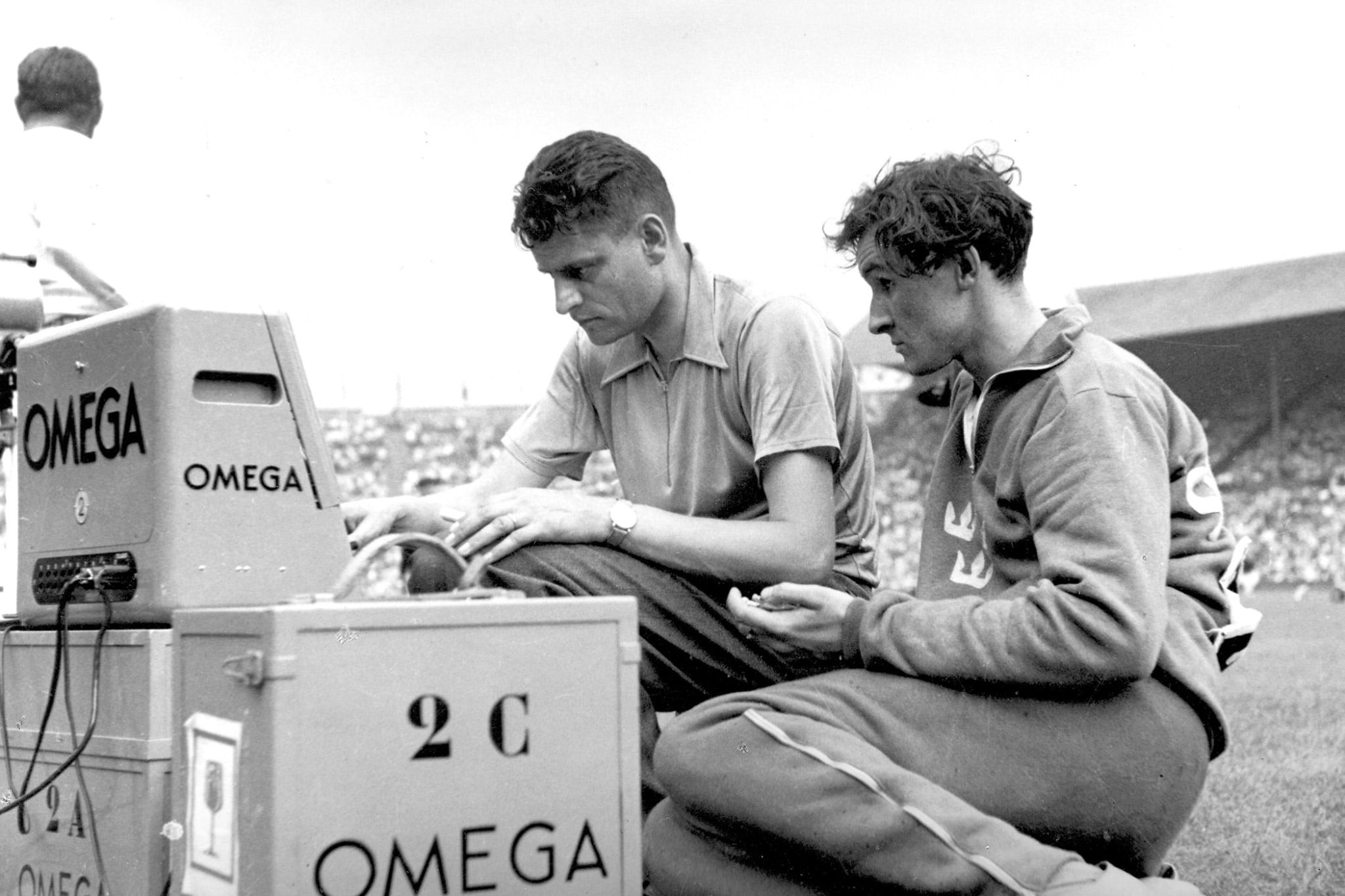
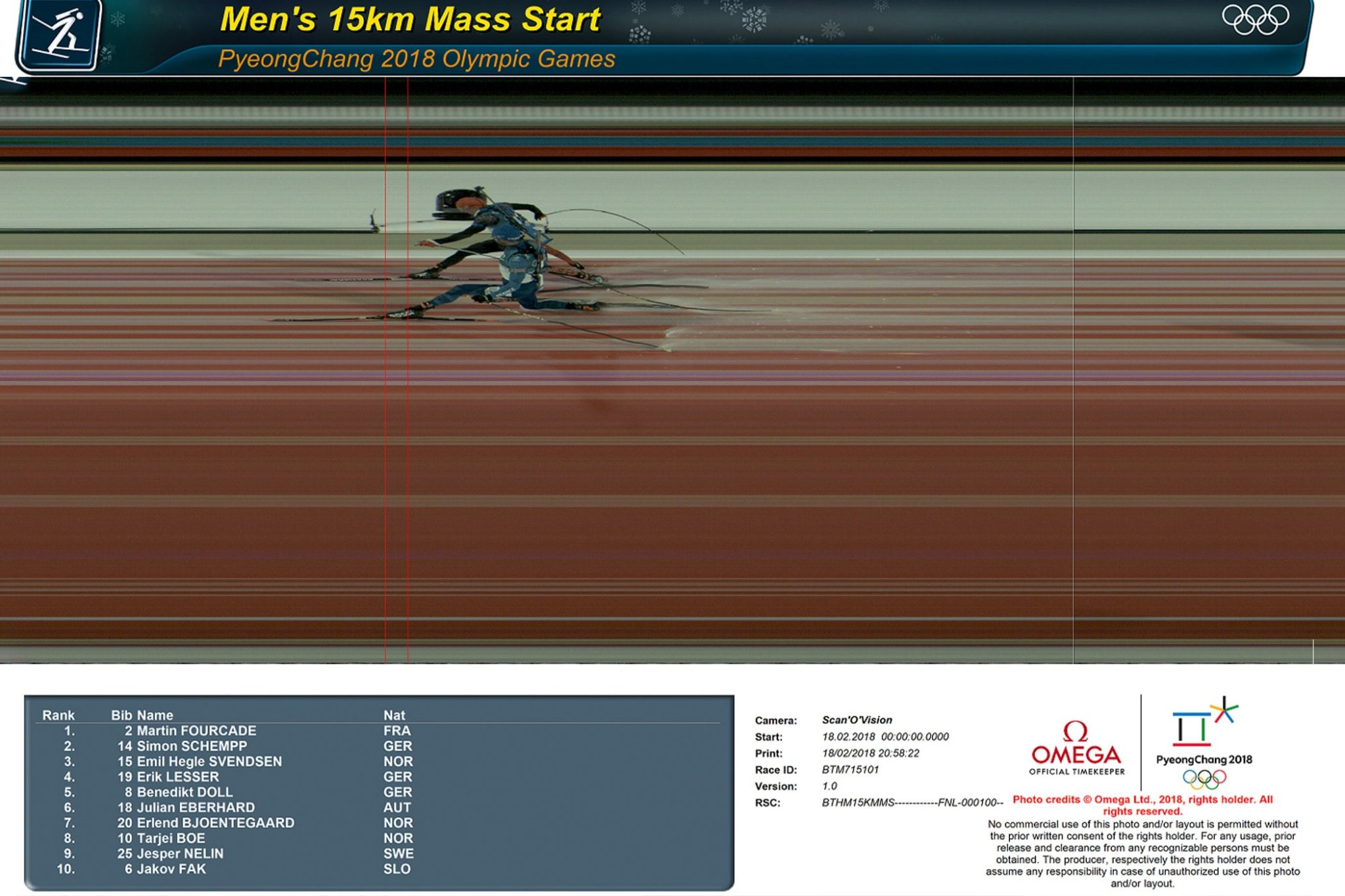
In the 1960s, live broadcasting became increasingly important. The 1964 Olympics were the first to be broadcast worldwide. Omega played a crucial role by developing the Omega-Scope, a device that allowed real-time display of athletes’ times at the bottom of TV screens. Omega continues to manage live timekeeping for TV broadcasts, providing all graphics and times displayed on screens using specialised software and graphic generators. This requires split-second precision, so Omega’s staff work closely with broadcasting companies throughout the Olympics.
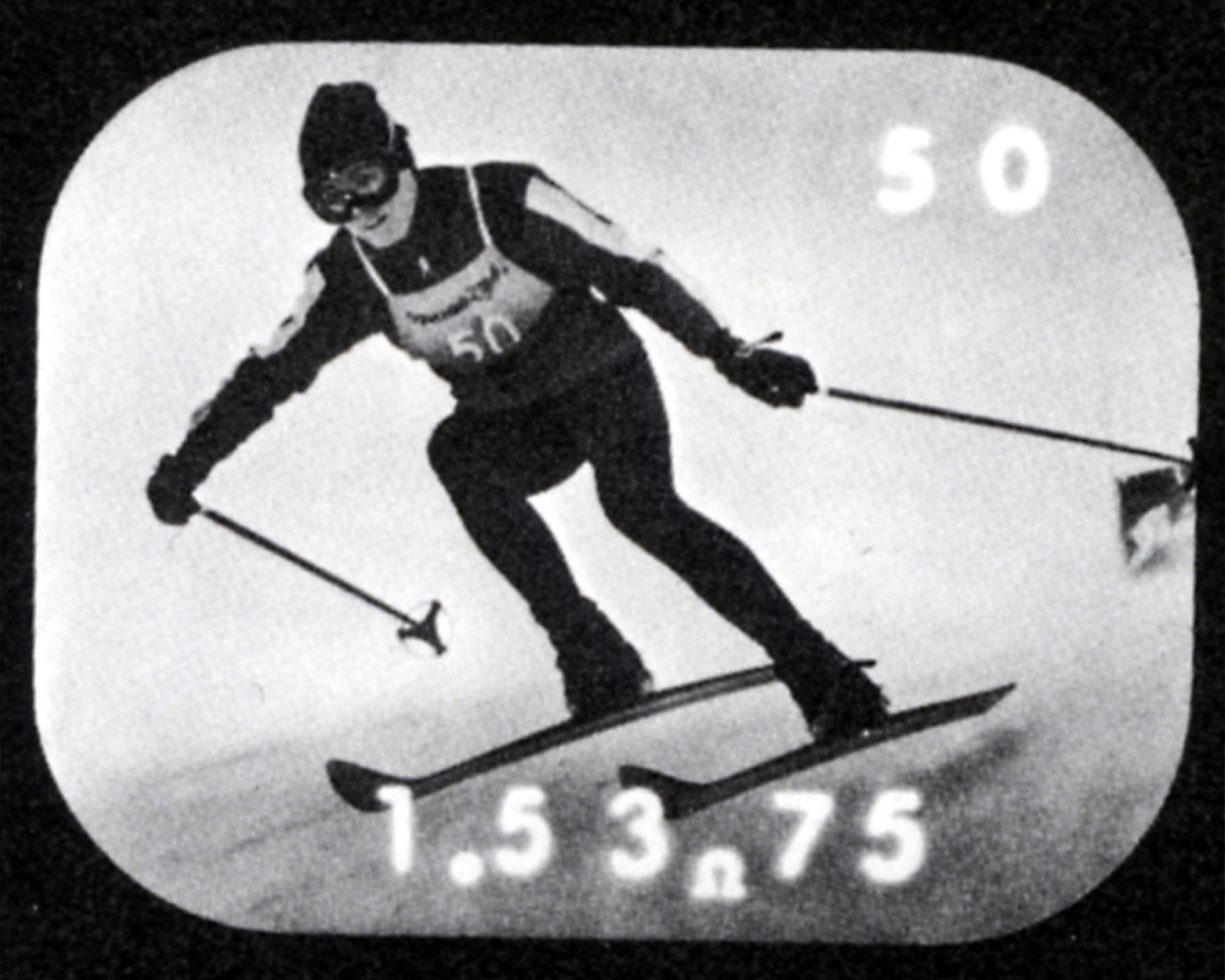
When a fingernail determines a victory
At the 1960 Rome Olympics, the 100m freestyle final saw Lance Larson and John Devitt seemingly finish at the same time. The time was determined by averaging the times from three different stopwatches. However, the rules stipulated that only one athlete could win the gold medal. The judges awarded Devitt the gold and Larson the Olympic record, leading to significant controversy. Subsequently, the international swimming federation asked Omega to eliminate human error through technology. In response, touch pads were introduced at the 1968 Mexico City Olympics. These pads, placed on the inside of the swimming pool, reacted to the slightest touch, allowing athletes to stop the clock themselves at the finish.
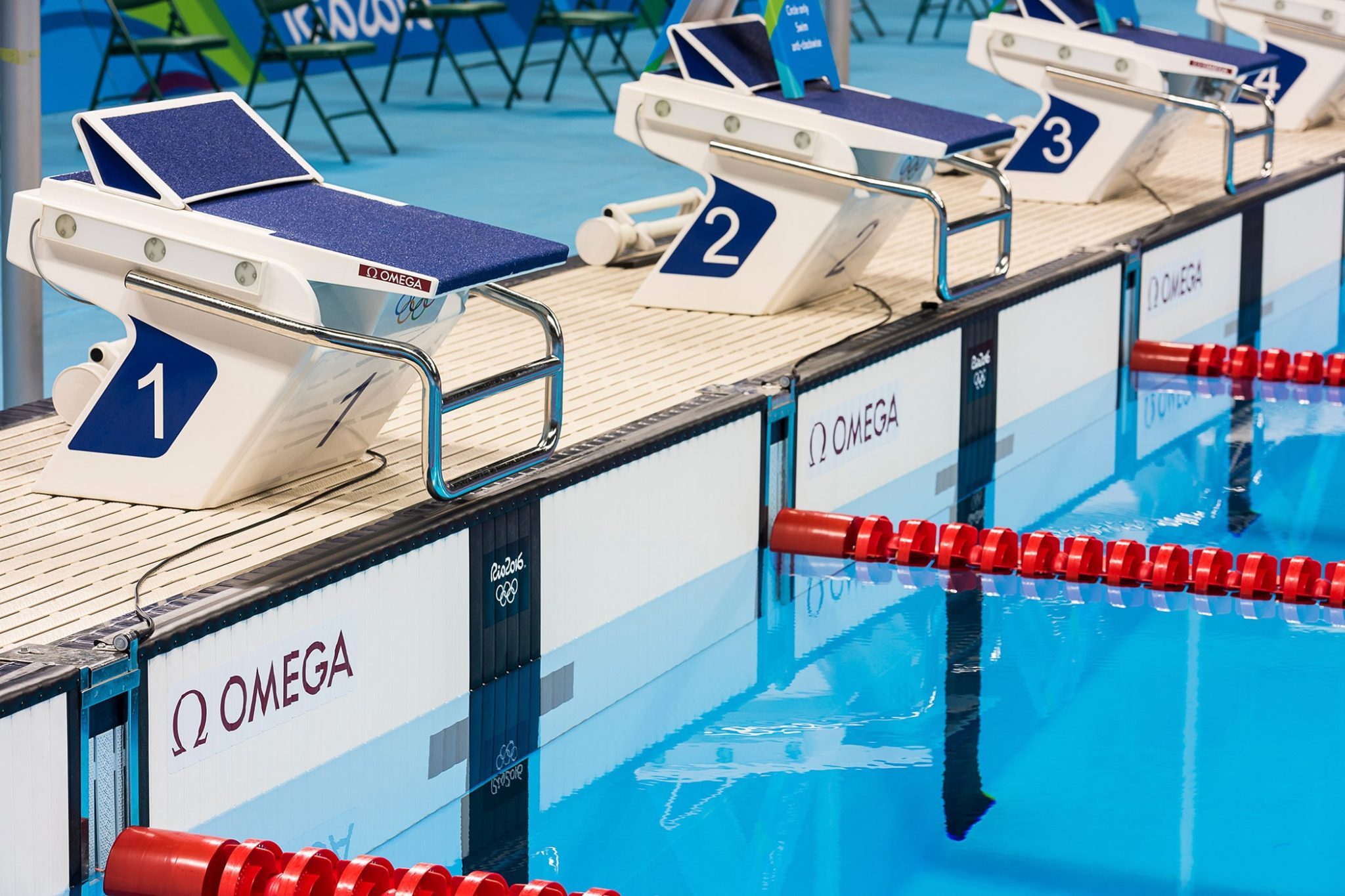
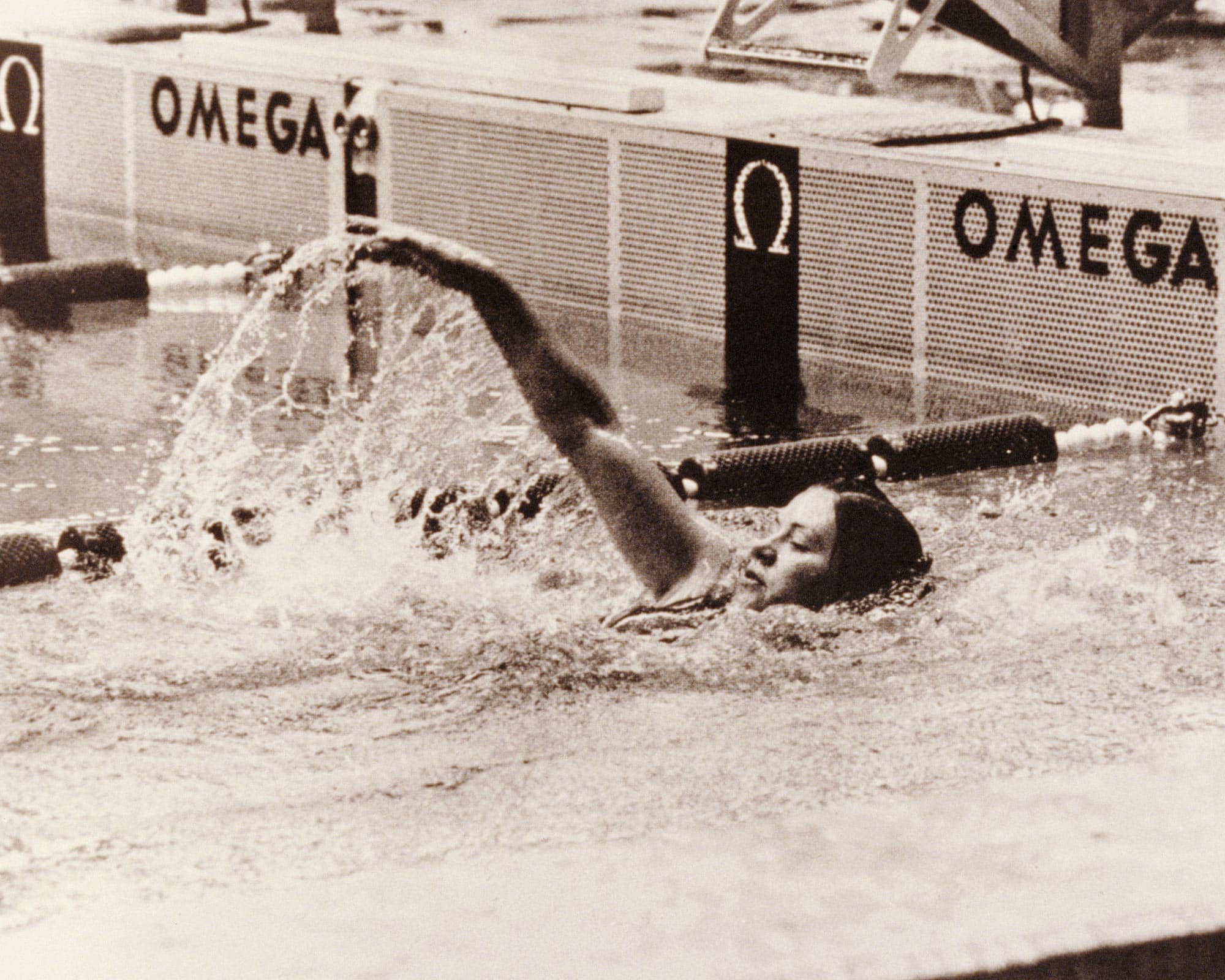
There remains a unique aspect to swimming competitions. It can never be guaranteed that the architecture of swimming pools and lane lengths are 100 percent identical. Therefore, times are measured to the nearest hundredth of a second, roughly equivalent to the tip of a fingernail. Michael Phelps famously won the 2008 Beijing Olympics by the smallest possible margin in swimming, just 1/100th of a second—a mere fingernail’s breadth ahead of his competitor.
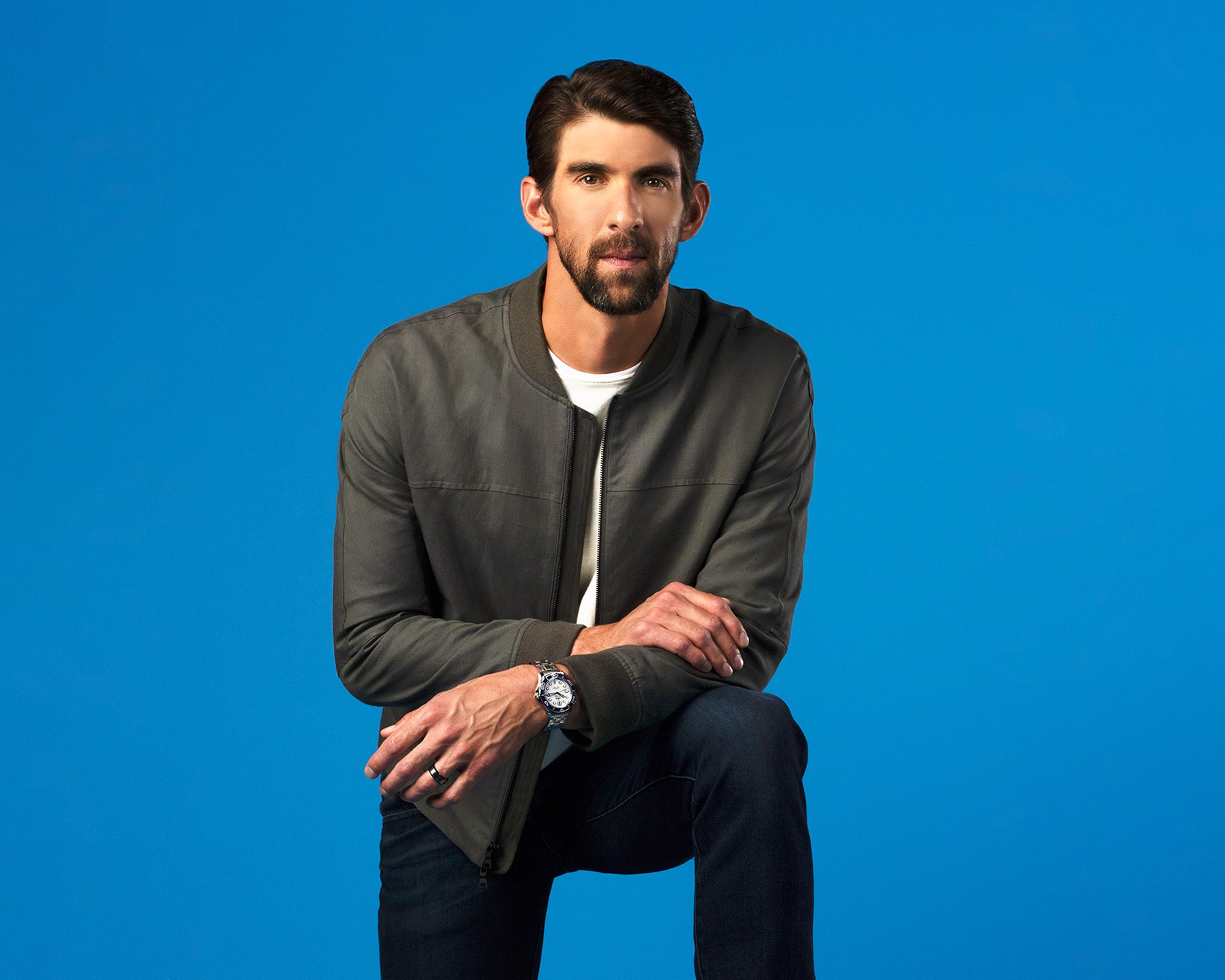
Michael Phelps
False start detectors and the electronic starting pistol
At the 1984 Olympic Games, Omega’s Timekeeping Lab introduced start blocks equipped with sensors that detected pressure on the footrests, signaling if a runner started prematurely. Athletes were required to remain stationary for 0.100 seconds after the starting signal, accounting for human reaction time. Omega also unveiled another innovation in 1984 that complemented the false start detectors. Runners furthest from the starter’s pistol were disadvantaged as they heard the sound slightly later, which, although minimal, mattered in a race measured in thousandths of a second. To address this, Omega installed speakers behind each starting block, ensuring all competitors heard the start signal simultaneously. This system proved effective and was subsequently used in swimming, with speakers placed behind the athletes’ starting platforms.
By 2010, the traditional starting pistol was entirely replaced by an electronic version, first used at the short track and speed skating events in Vancouver. This technology was not only more accurate but also circumvented the increasingly stringent security measures that made carrying and using a traditional pistol more complex.
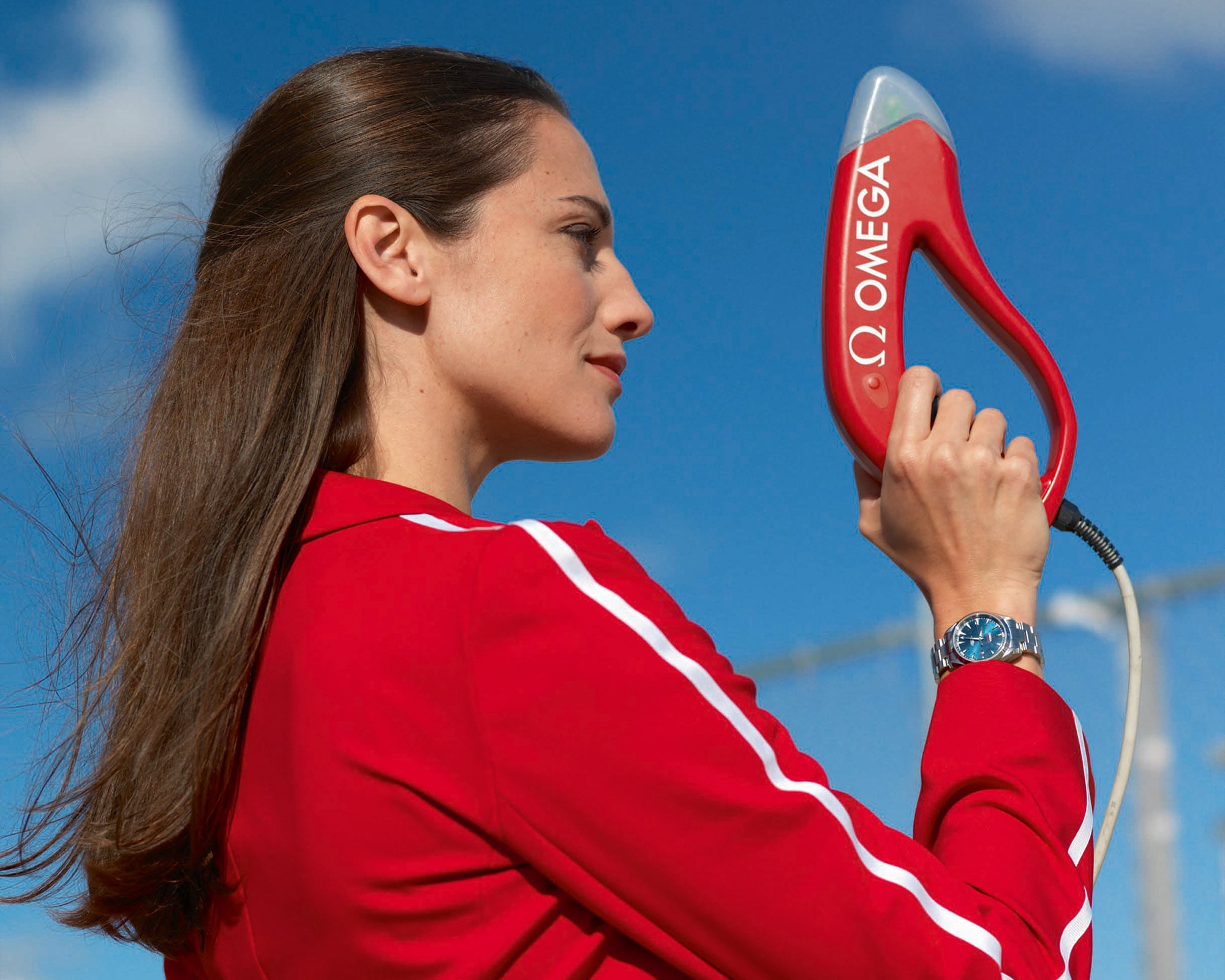
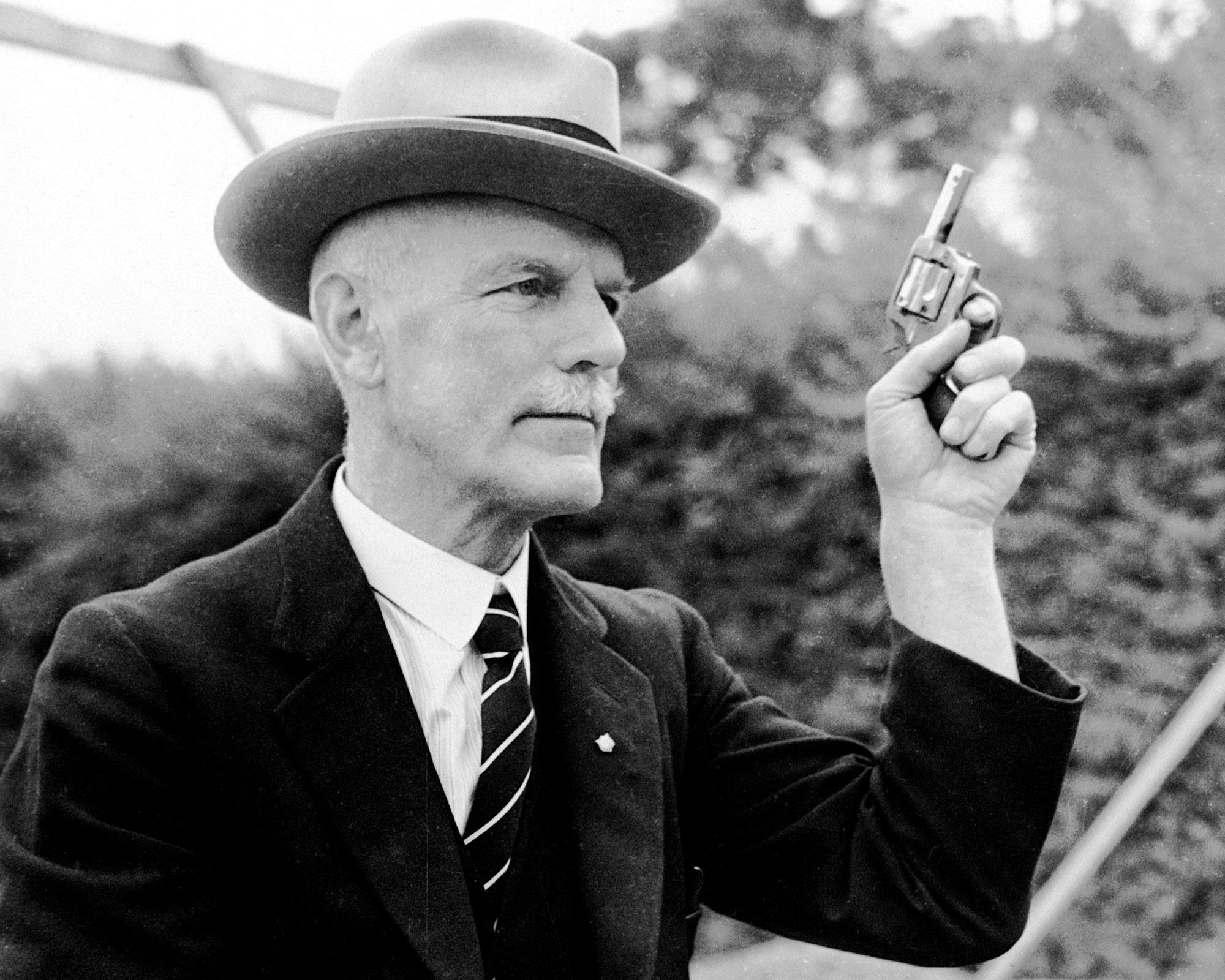
Quantum timer and artificial intelligence
Over the past 20 years, technology has seen another leap forward. In 2018, Omega introduced motion sensors worn by athletes and positioning systems. This advancement means that not only is result data available, but during the race, 2,000 data points can be collected per second. This real-time data provides live statistics to viewers and allows detailed post-race analysis to determine where and why an athlete performed well or poorly. In recent years, artificial intelligence has assisted in evaluating this data, providing significantly more precise results.
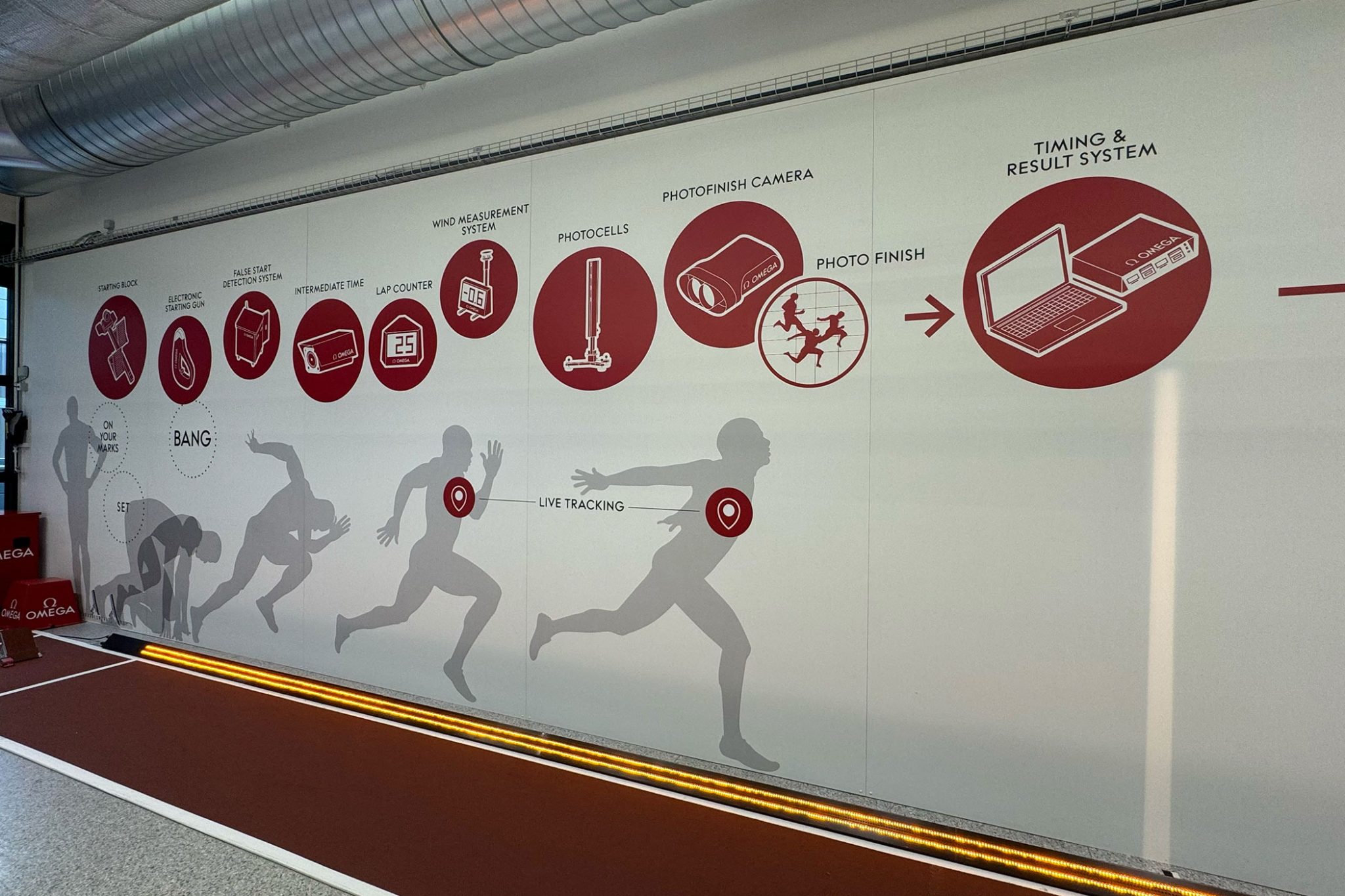
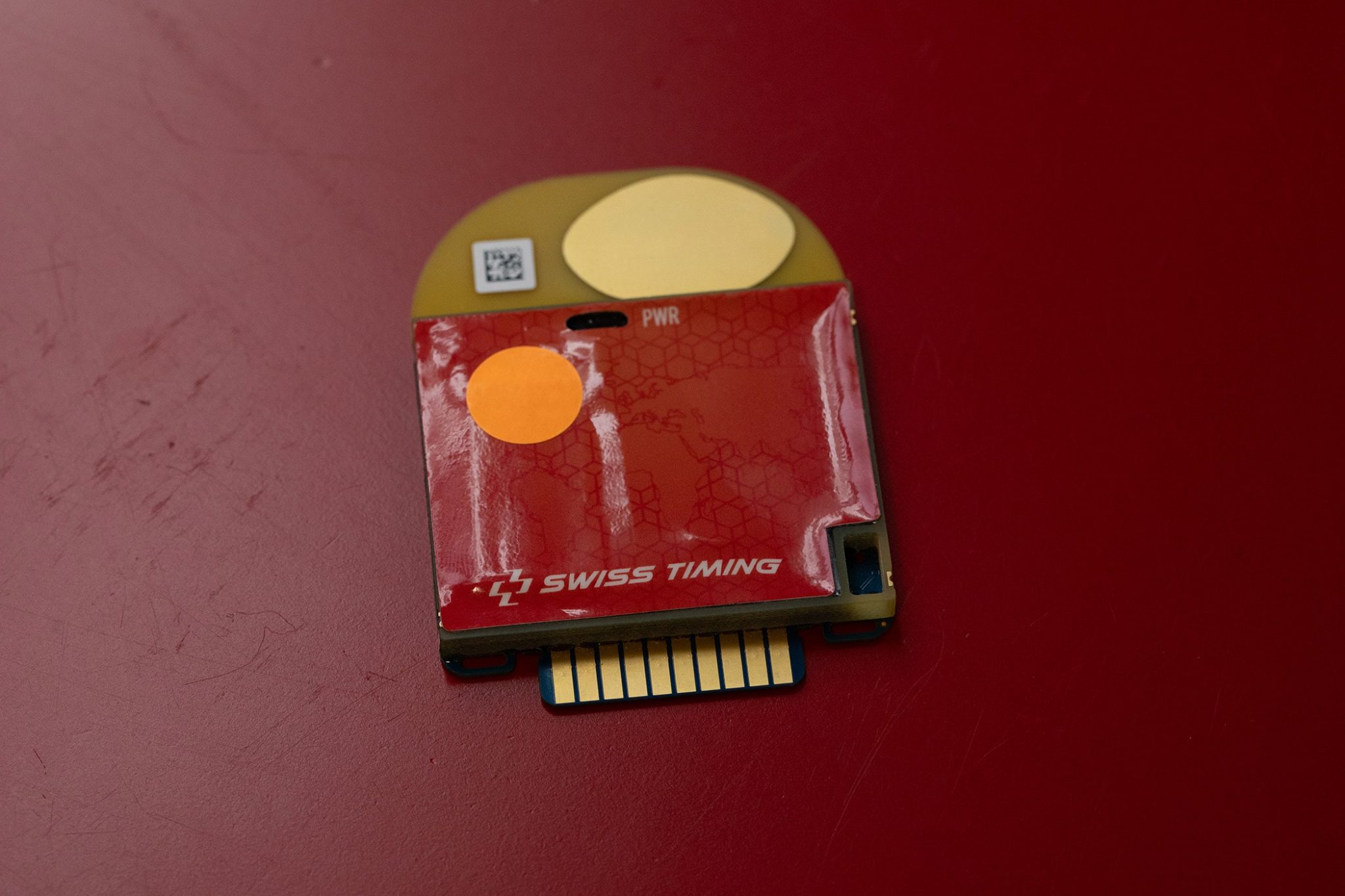
The high-speed cameras used in Beijing 2022 could already capture 10,000 images per second. The latest cameras, to be used in Paris, can produce 40,000 images per second in 4K resolution. Today’s technology can measure not just hundredths or thousandths of a second but millionths of a second (Omega’s Quantum Timer) with a deviation of just 23 nanoseconds every 24 hours. One might question the relevance of a millionth of a second in any competition. However, the answer lies in perspective. Alain Zobrist and his team aim to make timekeeping as precise as possible, a fundamental mission of Swiss Timing in Corgémont. This pursuit of precision has always been Omega’s ethos, striving to make mechanical timekeeping increasingly accurate. “We aim to enhance precision in timekeeping while also working to make the devices smaller,” says Zobrist. This goal closely parallels the principles of watchmaking.
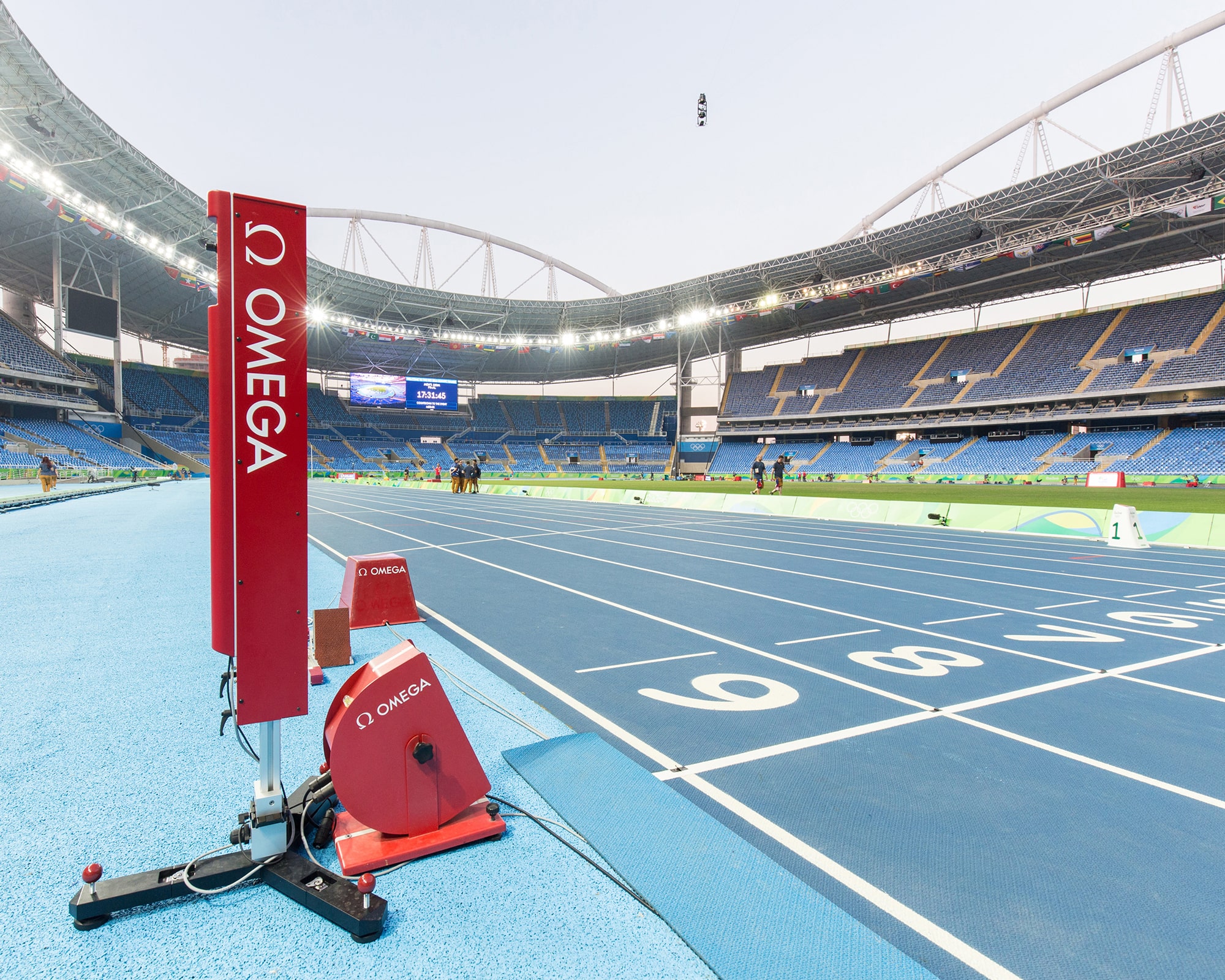
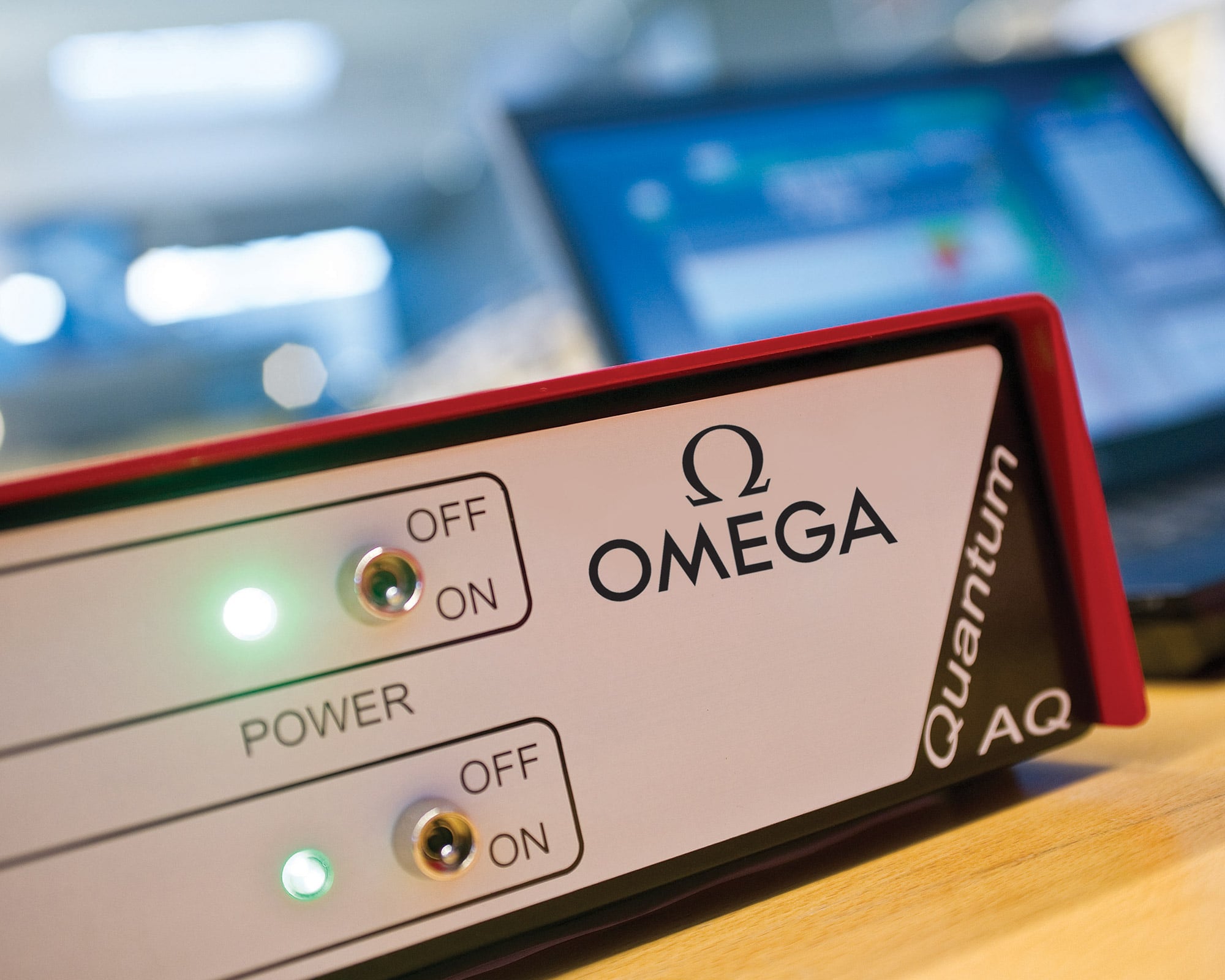
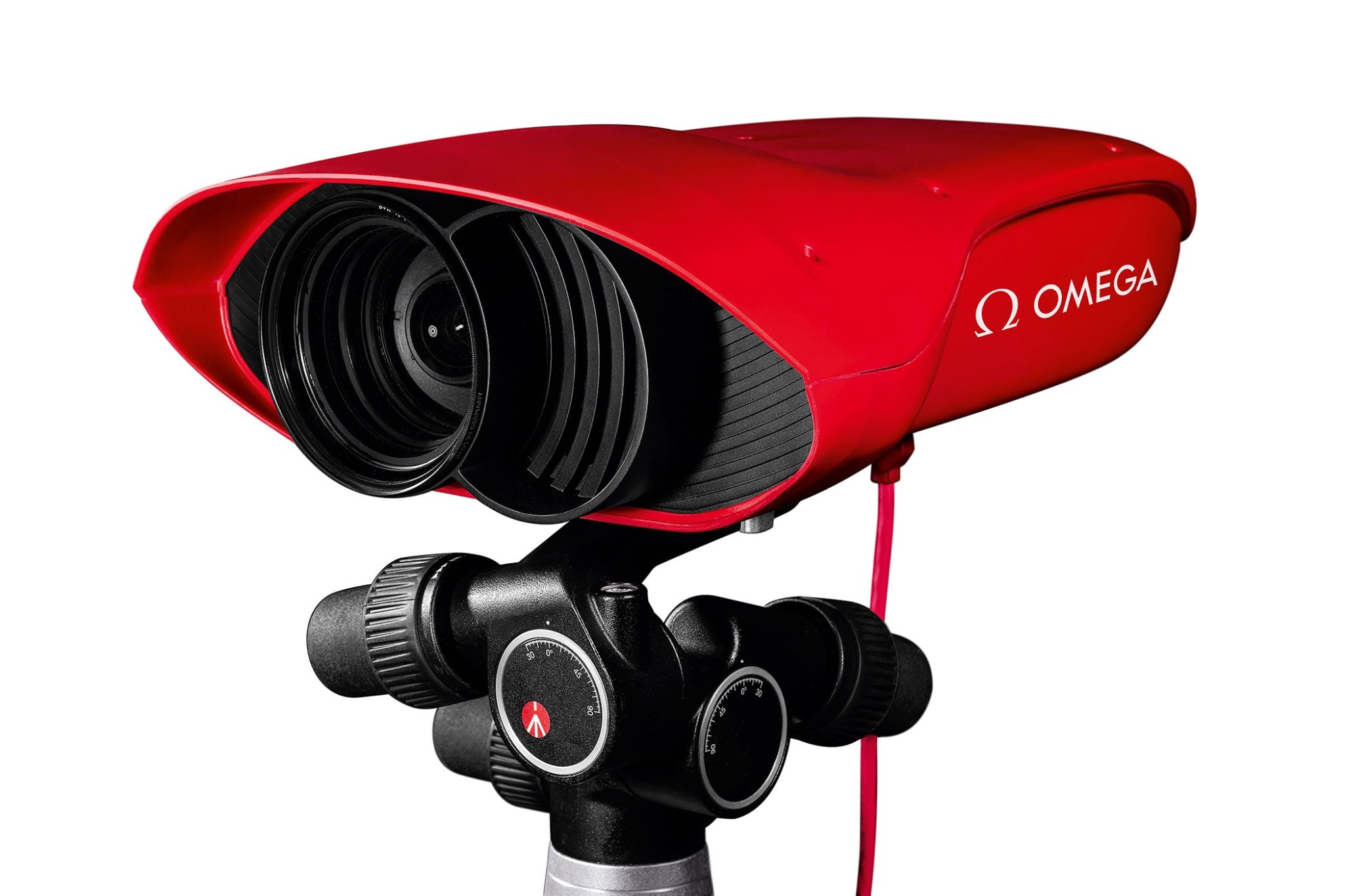
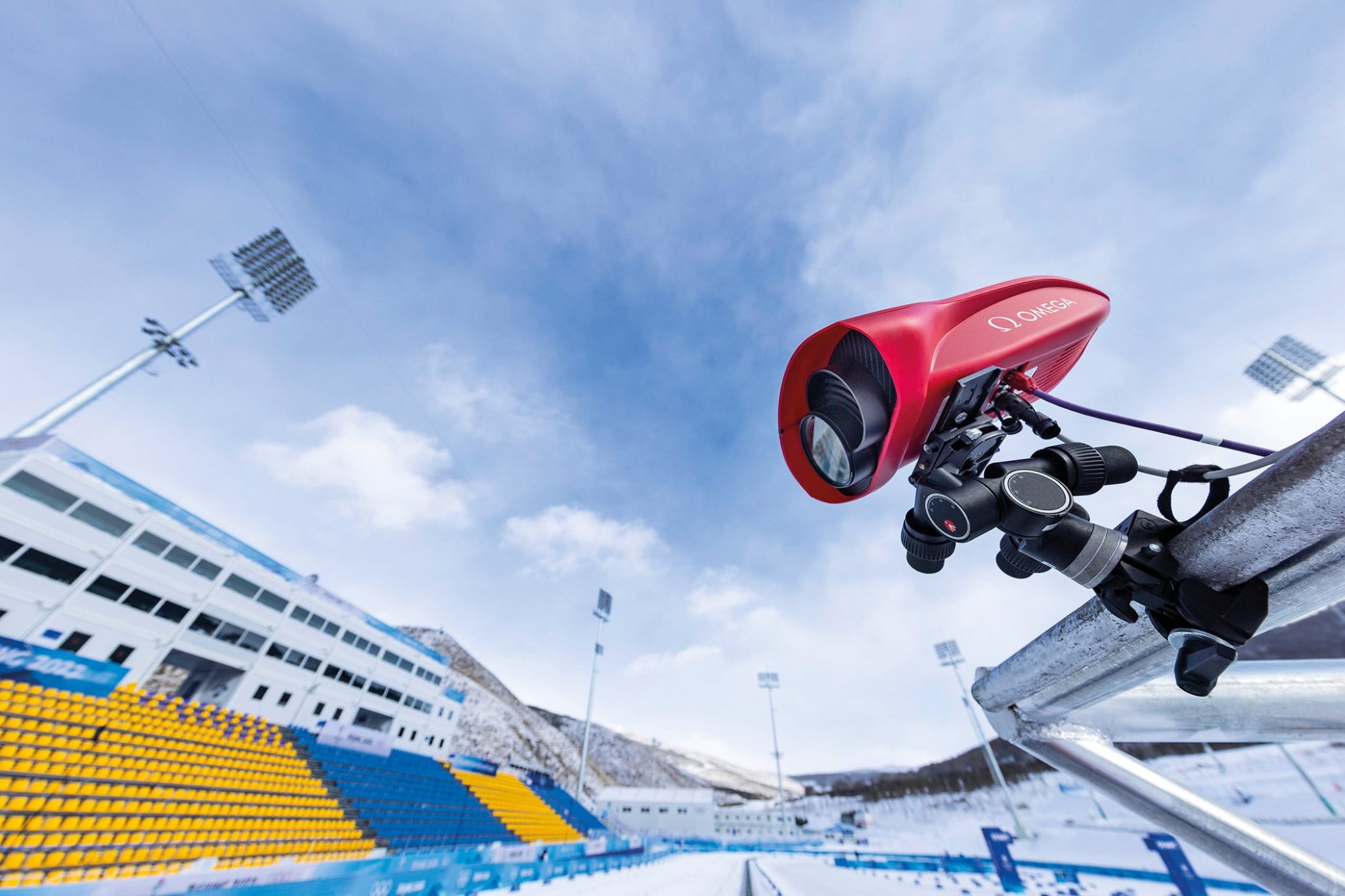
Much like the watchmaking industry plans its movements five to seven years ahead, Zobrist and his team are currently working on technologies for the next four to six years. These innovations undergo extensive testing by consultants and athletes before their eventual debut at the Olympic Games. Additionally, new sports approved by the IOC must be accommodated – typically announced seven years in advance, giving Swiss Timing ample time to prepare.
The continuous Olympic cycle
As Zobrist and his team develop new technologies, preparations for the next Olympics begin three years prior to the opening ceremony. A team of approximately eight employees coordinates closely with local authorities, architects, and sports federations. Ten days before the opening ceremony, 350 tons of equipment are set up and thoroughly tested. In Paris, 550 personnel will be responsible for timekeeping, spread across about 30 hotels in and around the city.
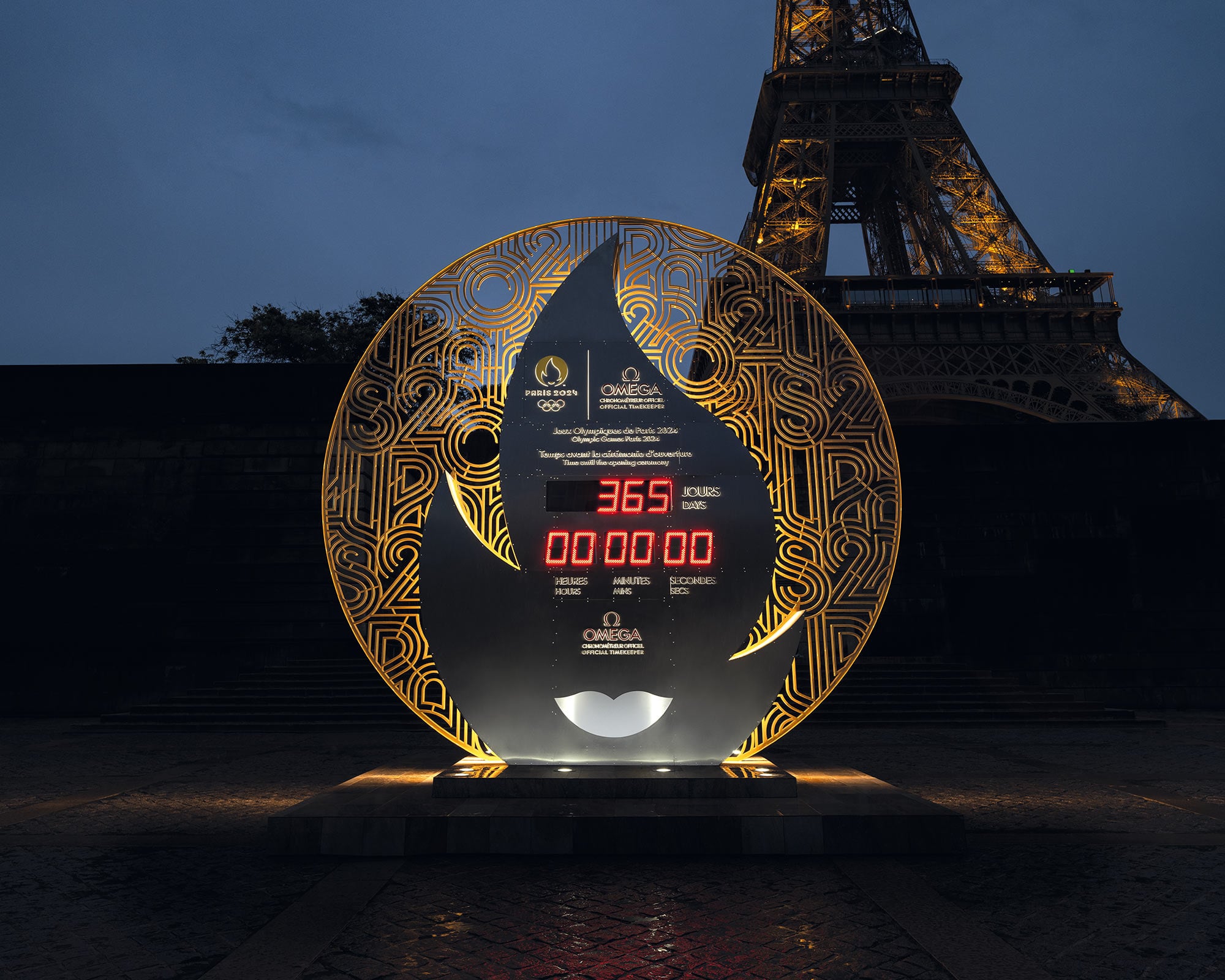
Countdown to the Olympic Games in Paris 2024
When asked if this enormous responsibility causes him sleepless nights, Zobrist responded calmly: “Not really. We have up to four backup systems in case of a failure. All devices are constantly synchronised to ensure no data is lost. We use an independent power supply, so we are not affected by blackouts. And for the ultimate emergency, we even have batteries.”
The IOC recently announced that its partnership with Omega would be extended until 2032, a milestone that they intend to celebrate together. Omega has been the official timekeeper of the Paralympic Games since 1992, which presents unique technological challenges. Omega now offers solutions for over 100 sports.
Seamaster Diver 300M “Paris 2024” Special Edition
Not only will Zobrist and his Swiss Timing team bring innovations to Paris, but Omega will also present a range of special edition models for the 2024 Olympics. A year before the games, Omega launched the Seamaster Diver 300M “Paris 2024” Special Edition. This watch features a 42 mm stainless-steel case and a bezel made from Omega’s proprietary Moonshine Gold alloy. The dial is crafted from white ceramic with a subtle wave pattern. The second hand, also made from 18K Moonshine Gold, proudly displays the Paris 2024 logo. The numerals on the date display are styled to match the Paris 2024 typography. A quick-change system allows for easy swapping of the watch strap. The Seamaster Diver 300M “Paris 2024” Special Edition is powered by the Metas-certified calibre 8800, offering a 55-hour power reserve.
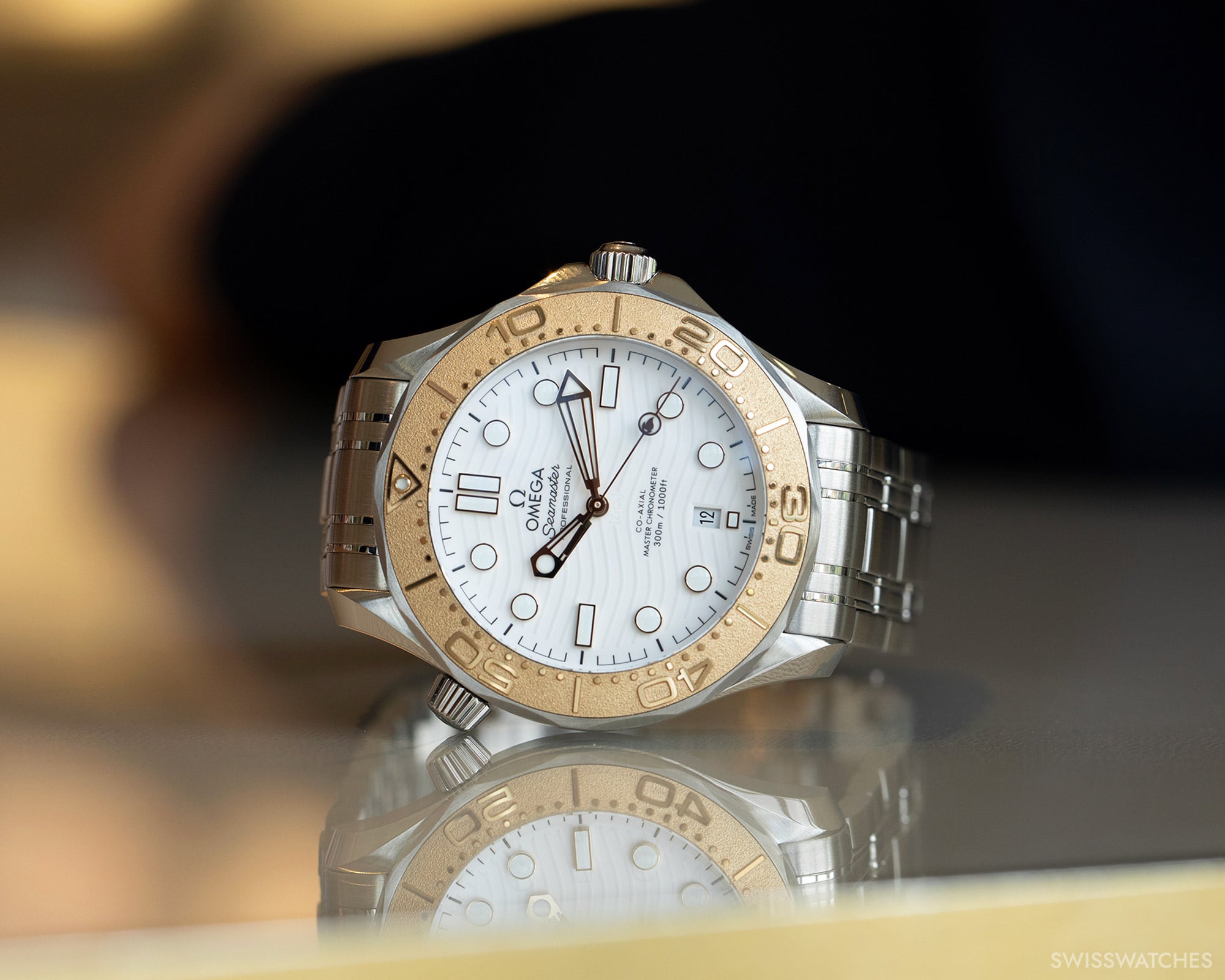
Speedmaster Chronoscope Paris 2024
In April this year, exactly 100 days before the games, Omega introduced a series of new Chronoscope models. First launched in 2021, the Chronoscope combines the Greek words ‘chronos’ (time) and ‘skopein’ (observe), symbolising a watch with stopwatch functionality. The Chronoscope features a tachymeter, a telemeter, and a pulsometer, contributing to its distinctive dial design. Telemeter functions in watches are rare today; they allow the wearer to measure distance based on the speed of sound. For example, during a thunderstorm, one can calculate the distance by timing the interval between lightning and thunder.
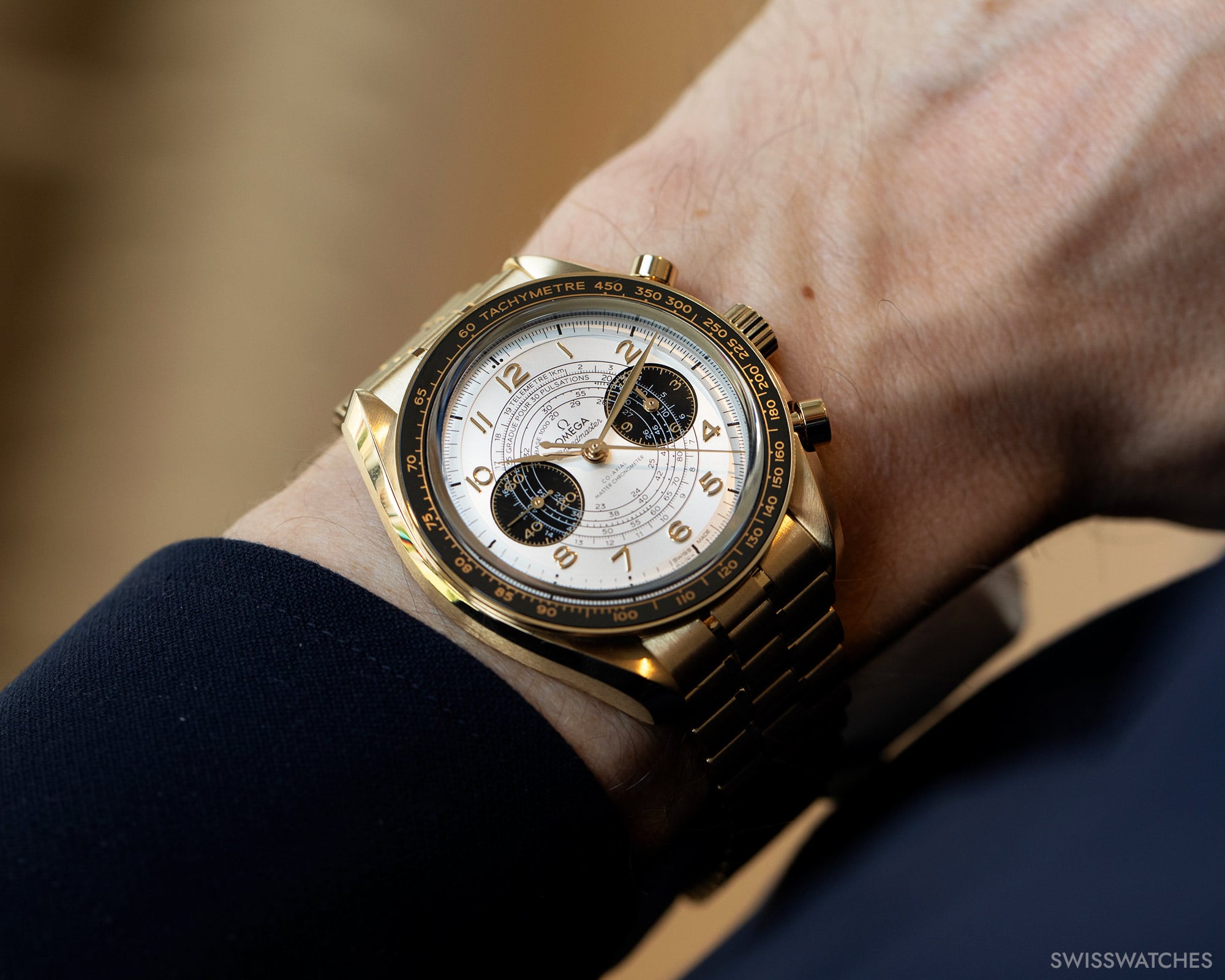
Speedmaster Chronoscope Paris 2024 in 18K Moonshine Gold
For the 2024 Olympic Games, Omega has introduced four new Chronoscope models, available in gold, black, and white—the official colours of the Paris Games. This collection includes a stainless-steel model (43 mm case) with an aluminium bezel, as well as a striking version featuring a 43 mm case and bracelet made from 18K Moonshine Gold, complemented by a ceramic bezel. The dials are opalised silver-white, with contrasting black subdials. These watches are powered by the Metas certified calibre 9908/9909, boasting a power reserve of approximately 60 hours. For those who prefer a different look, the new models can also be paired with a leather strap.
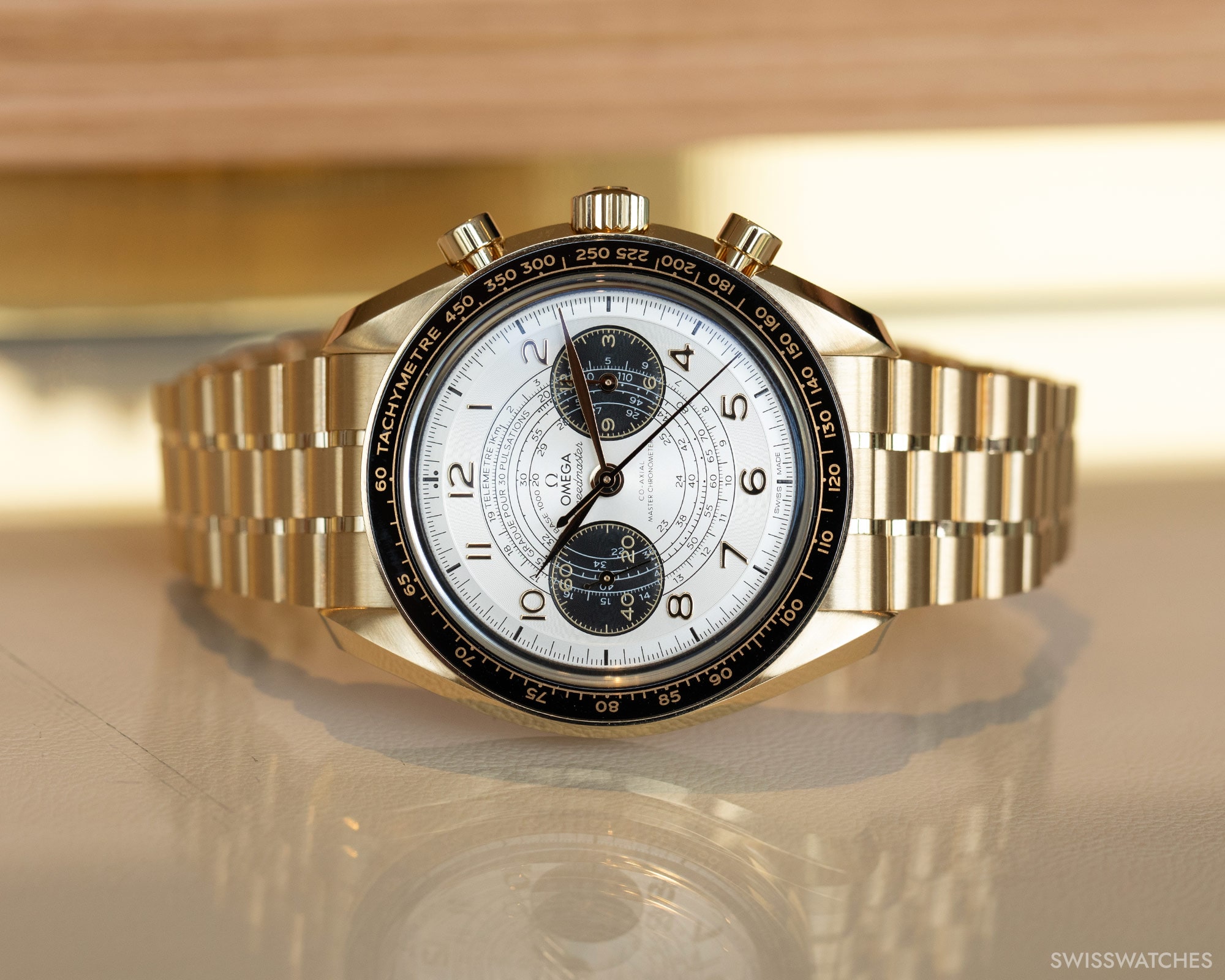
The new special editions are available online at OMEGA | SEAMASTER DIVER 300 PARIS 2024 and OMEGA | SPEEDMASTER CHRONOSCOPE PARIS 2024.
